How to Reset Safari to Default Settings on Your Mac
If Safari runs slow or fails to open a page on your Mac, we will show you how to reset the browser to its default state to fix those issues.
Safari helps you feel at home while browsing the web on a Mac. The latest iterations of Safari always bring improvements, but no browser is perfect. Over time, Safari tends to slow down, become sluggish, and feel unresponsive.
While Chrome and Firefox pack a reset button, this feature is missing from Safari. We will show you how you can reset Safari to default settings on your Mac.

First, Back Up Your Bookmarks
After you've used Safari for a while, you probably have a lot of sites saved in your Bookmarks and Favorites. It's a good idea to make a copy of your Bookmarks before you proceed. Since you'll remove every bit data related to Safari, you probably don't want to erase all your bookmarks.
To do this, launch Safari, select the File tab in the top menu bar, and click Export Bookmarks . You can either set a new name or let it use the default one if you don't mind it. Click Save to save a copy of those bookmarks.
You may also want to edit, organize, and manage those bookmarks that you've collected over years.
After you've reset Safari by following the methods below, you can import the HTML copy of your Bookmarks by going to File > Import From and selecting Bookmarks HTML File . Make sure to save the file somewhere safe in the meantime.
Clear the Browsing History in Safari
To start, you should run Safari's built-in history cleaner. This will remove cookies and other browsing data from everywhere you've visited. Thankfully, the process to remove your browsing history manually from Safari is quite straightforward.
Related: How to Clear Your Safari Browsing History and Data
After opening Safari, click on the Safari item in the top menu bar and select Clear History . A window will pop up; select All History from the dropdown list. Then click on the Clear History button to erase all that data from Safari.
Remove the Temporary Files and Cache
To improve your browsing efficiency, Safari stores the data for sites that you visit regularly as cache on your Mac and uses that to load elements faster than downloading them again. That cache takes up disk space and often contributes to Safari's performance woes.
It's thus a good idea to get rid of that old data when you're resetting Safari to its defaults. Here's how to clear Safari's temporary files and cache:
- While you have Safari running, open Safari > Preferences from the menu bar.
- A window will pop open. Head to the Advanced tab and select the check box for Show Develop menu in menu bar .
- The Develop menu will appear next to Bookmarks on the menu bar. Select Develop > Empty Caches or use Option + Cmd + E to quickly clear the web cache.
Delete All Cookies
Like other browsers, Safari stores site cookies whenever you visit websites. These cookies contain details about your interactions with the site, such as registration and form data, your cart contents, and similar. It's a good idea to remove those cookies when starting fresh.
Here's how you can clear all cookies from Safari:
- Launch Safari and in the menu bar at the top of the screen, go to Safari > Preferences .
- In the window that pops up, go to the Privacy tab and click the Manage Website Data button. That'll pop open a window showing the list of cookies in Safari.
- You can hold down Cmd to select cookies to remove individually, or click Remove All to delete the entire list.
Turn Off Website Access/Delete Safari Plugins
While Apple builds Safari for efficiency, some outside plugins and website access rules can cause Safari to slow down. It's best to ensure that those plugins ask you before Safari runs them. You can also confirm which sites can access your Mac's camera, microphone, and other settings.
With Safari open, go to Safari > Preferences in the menu bar on the top of the screen. Go to the Websites tab and check each item in the sidebar for website access. We recommend disabling Auto-Play , Camera , Microphone , Location , and Pop-Ups , unless you have some reason not to do so.
If you're using an older version of Safari that doesn't have these options, you can head to Safari > Preferences and click on Security > Plug-In Settings . Then set all the plugins to Ask before Safari runs them, and disable the ones you don't need.
Disable or Uninstall Safari Extensions
Unlike Chrome and Firefox, Apple allows only a handful of extensions to work with Safari. Even with this filtering, some of them might impact your browsing performance and slow everything down. Whether you use extensions for saving articles to Pocket or applying dark mode on every website, they could affect Safari.
You can disable these extensions by going to Safari > Preferences and clicking the Extensions tab. Uncheck each extension listed to disable it. To remove all of them, you'll need to select each extension and click on the Uninstall button in the adjacent pane.
You can always find and install new Safari extensions later after resetting the browser. Try to only install high-quality ones you absolutely need.
Reset Safari Using Terminal
Even after removing cookies, cache, browsing history, and extensions, Safari still has some underlying metadata. To wipe everything in a true sense, you can use the Terminal app.
Using the Terminal to reset Safari to its default state means you'll have to use a series of commands. Refer to our beginner's guide to the Mac Terminal for using it effectively.
To reset Safari using Terminal:
- Open the Terminal app (you can find it easily using Spotlight with Cmd + Space ).
- Next, open the Apple menu at the top-left corner of your screen. Click Force Quit and select Safari to completely close it.
- Enter the below commands commands, one line at a time. After you run each command, the Terminal will prompt for confirmation to delete said files. Type y to confirm, then hit Enter .
Reset Safari for a Fresh and Fast Browser Experience
Now you know how to effectively reset Safari to factory settings. It should feel faster after this—though all the sites you visit at first will take a couple of seconds to load completely, since they'll create new cookies and cache.
To get even more out of Safari, make sure you're applying the best Safari tweaks for a better experience.

Reset Safari on Mac without opening (using Terminal)
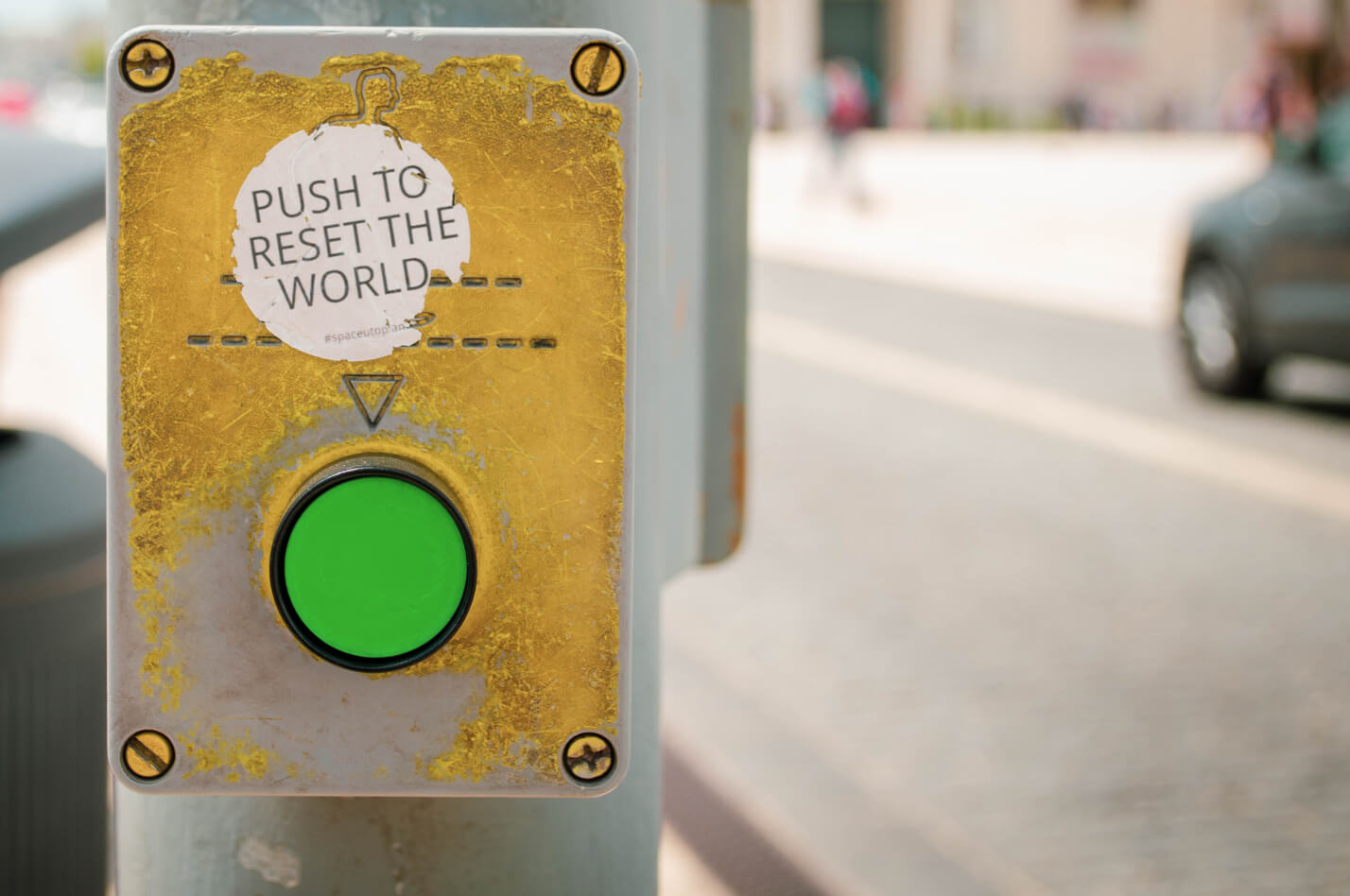
Safari is arguably the safest and fastest of browsers. Its Apple’s own application and comes preloaded on its devices. Yet not all users are equally excited about it. The reason? It needs to be configured frequently. One of the safest ways to reconfigure this is to reset Safari from the Terminal using the Command Prompt.
Why does Safari need resetting?
Over time, Safari fails to holdback pop-ups. Unmonitored dialog boxes that refuse to close may make your system vulnerable to malware or expose underage users to restricted sites. Or, while you sit down for work or leisure, you may be redirected to irrelevant pages repeatedly. In both cases, the browser stops working.
Try Kingpin Private Browser for Free »
How do you reset Safari from the Command Prompt?
You can safely do this by following the steps listed below. These do not need users to be particularly tech-savvy. So let’s get started.
Resetting Safari
#1. Open the Terminal application , like so:
Finder > Applications > Utilities
#2. The next step requires users to copy a series of commands and paste it onto the Terminal window .
The codes must be identical to the ones given below. Any modification is likely to damage the system beyond repair.
The codes are as follows:
mv ~/Library/Safari ~/Desktop/Safari-`date +%Y%m%d%H%M%S`; \ rm -Rf ~/Library/Caches/Apple\ -\ Safari\ -\ Safari\ Extensions\ Gallery; \ rm -Rf ~/Library/Caches/Metadata/Safari; \ rm -Rf ~/Library/Caches/com.apple.Safari; \ rm -Rf ~/Library/Caches/com.apple.WebKit.PluginProcess; \ rm -Rf ~/Library/Cookies/Cookies.binarycookies; \ rm -Rf ~/Library/Preferences/Apple\ -\ Safari\ -\ Safari\ Extensions\ Gallery; \ rm -Rf ~/Library/Preferences/com.apple.Safari.LSSharedFileList.plist; \ rm -Rf ~/Library/Preferences/com.apple.Safari.RSS.plist; \ rm -Rf ~/Library/Preferences/com.apple.Safari.plist; \ rm -Rf ~/Library/Preferences/com.apple.WebFoundation.plist; \ rm -Rf ~/Library/Preferences/com.apple.WebKit.PluginHost.plist; \ rm -Rf ~/Library/Preferences/com.apple.WebKit.PluginProcess.plist; \ rm -Rf ~/Library/PubSub/Database; \ rm -Rf ~/Library/Saved\ Application\ State/com.apple.Safari.savedState
After you’ve pasted it, hit Enter to complete changing the setting. To use Safari once more, restart your system and launch the browser.
These commands are all you need to erase the old browser settings and get a new Safari browser that can block pop-ups, dialog boxes, and redirects. What you achieve through this is essentially a factory reset. Safari goes back to its earliest default setting before you began to customize it.
Alternative solution
Another way to bypass these issues is to migrate to a secure browser or use a different browser for specific activities online. There are some great browsers out there, for instance, Kingpin that hides all your browsing behavior . With it set to confidential browsing by default, you can go around several web risks like phishing or loss of passwords.
Kingpin does not save cookies or the data you enter online. Once your browsing session is over, the browser is wiped clean. You can block ads and recommendations too. It always works on the Incognito mode which is especially useful when one is making online transactions or browsing sensitive content. An additional browser is a safer option today.
Three things to keep in mind before resetting Safari
- Check for updates on the Mac OS and install if they have been released: Safari must run on the latest version of Mac OS to utilize its full set of features
- Close all running applications: It ensures your data loss is minimal during the Safari reset process and other applications are not affected.
- Create a backup file for all your bookmarks: You must have a list of bookmarks that takes you swiftly to useful sites. By deleting all stored data, you risk erasing all bookmarks too. Here is how you can find your bookmark file.
Apple icon > Go to Folder > type ˜ /Library > open folder Safari > find file Bookmarks.plist
This file records all your saved bookmarks. Better create a backup document of them before you go all blitzkrieg on browsing data.
Common solutions like disabling wireless network and deleting browser history along with stored data are usually enough to run Safari smoothly on Mac. But the fixes mentioned above fall short in your case since Safari can’t even be launched without the various dialog boxes and windows opening automatically. Even force quitting the browser does not help at all. Some users suggest holding the Shift key down while launching Safari but the effect is not consistent across all systems and versions.
In this case, you need to take a different approach – resetting Safari from the Terminal using the Command Prompt. A step-by-step solution has already been provided above. Follow the code sequence and your browser should be up and running just like before.
All in all, Safari is prone to malfunctioning from time to time like many other browsers. However, its fixes are easy to apply. If you would rather avoid tampering with system setting you can always continue online activities with an additional browser like Kingpin.
Related Posts:

How to reset all of your Safari browser's settings on a Mac, including clearing your cache and removing plugins
- Knowing how to reset your Safari browser on a Mac can help speed up the browser and fix issues.
- However, resetting Safari will also cause you to lose browser-saved data, including login credentials and browser extensions.
- Here's what you need to know to reset the Safari browser on your Mac computer.
- Visit Business Insider's homepage for more stories .
Resetting your Safari browser on a Mac computer can help speed it up and get rid of any issues you may have encountered.
But before you start, be aware that it will delete your installed extensions, as well as any auto-fill data, including saved usernames and passwords.
So you may want to take note of those before getting started, so that you can get your browser back to the way that you're accustomed to using it.
Once that's done, here's how to reset the Safari browser on your Mac .
Check out the products mentioned in this article:
Macbook pro (from $1,299 at apple), how to reset safari on a mac.
Resetting your Safari browser consists of several steps (like clearing your cache and history), rather than a simple button. So it will take a while to accomplish. Here's what you need to do:
Clear your Safari history
Keep in mind that the process is different for Safari on an iPhone or iPad , in case you want to do a reset across all of your devices.
1. Launch Safari
2. In the top toolbar, select "Safari" and then "Clear History."
3. Select "All History" in the dropdown and then click "Clear History."
Clear your Safari cache
1. With Safari open, go up to the top toolbar.
2. Select "Safari" and then "Preferences."
3. Toggle over to the "Advanced" tab and tick the box next to "Show Develop menu in menu bar" — you should see "Develop" appear in the top toolbar.
4. Click "Develop" and then select "Empty Caches."
Get rid of your Safari extensions
1. Go back into your Safari Preferences (located in that top toolbar)
2. Toggle over to the "Extensions" tab
3. Go through all of your extensions and select "Uninstall"
Turn off plugins within Safari
1. With the Safari Preferences window still open, toggle over to the "Websites" tab
2. Untick the box next to each plugin (listed at the bottom of the left sidebar)
Delete those plugins
These are stored in two separate areas, so your work will feel a bit redundant, but it's necessary to get the job done.
1. Tap your Finder to open it (it's the half-toned face icon in your bottom toolbar).
2. Under the "Go" menu of the top toolbar, select "Go to folder."
3. In the pop-up search menu, type "~/Library" and hit "Go."
4. Locate and go through the "Internet Plug-ins" folder and delete your plug-ins (you may want to keep your Safari Preferences open to "websites" so you can view your installed plugins) by dragging them over to the Trash.
5. Go up to the "Go" tab in your top toolbar and select "Go to folder".
6. Enter "/Library" in the search bar and hit "Go."
7. Locate and open the "Internet Plug-ins" folder again.
8. Select and delete or drag your undesired plugins into the Trash.
Related coverage from How To Do Everything: Tech :
How to set your browser's homepage on a mac, with instructions for safari, chrome, and firefox, how to block pop-ups on a mac computer's safari browser, and avoid fraudulent websites, how to add websites to your favorites list on a mac's safari browser, making them easily accessible at any moment, how to save and delete webpages on the reading list in your mac computer's safari browser.
Watch: Apple just launched a $6,000 Mac Pro, available this fall
- Main content
How To Reset Safari In Mac

- Software & Applications
- Browsers & Extensions
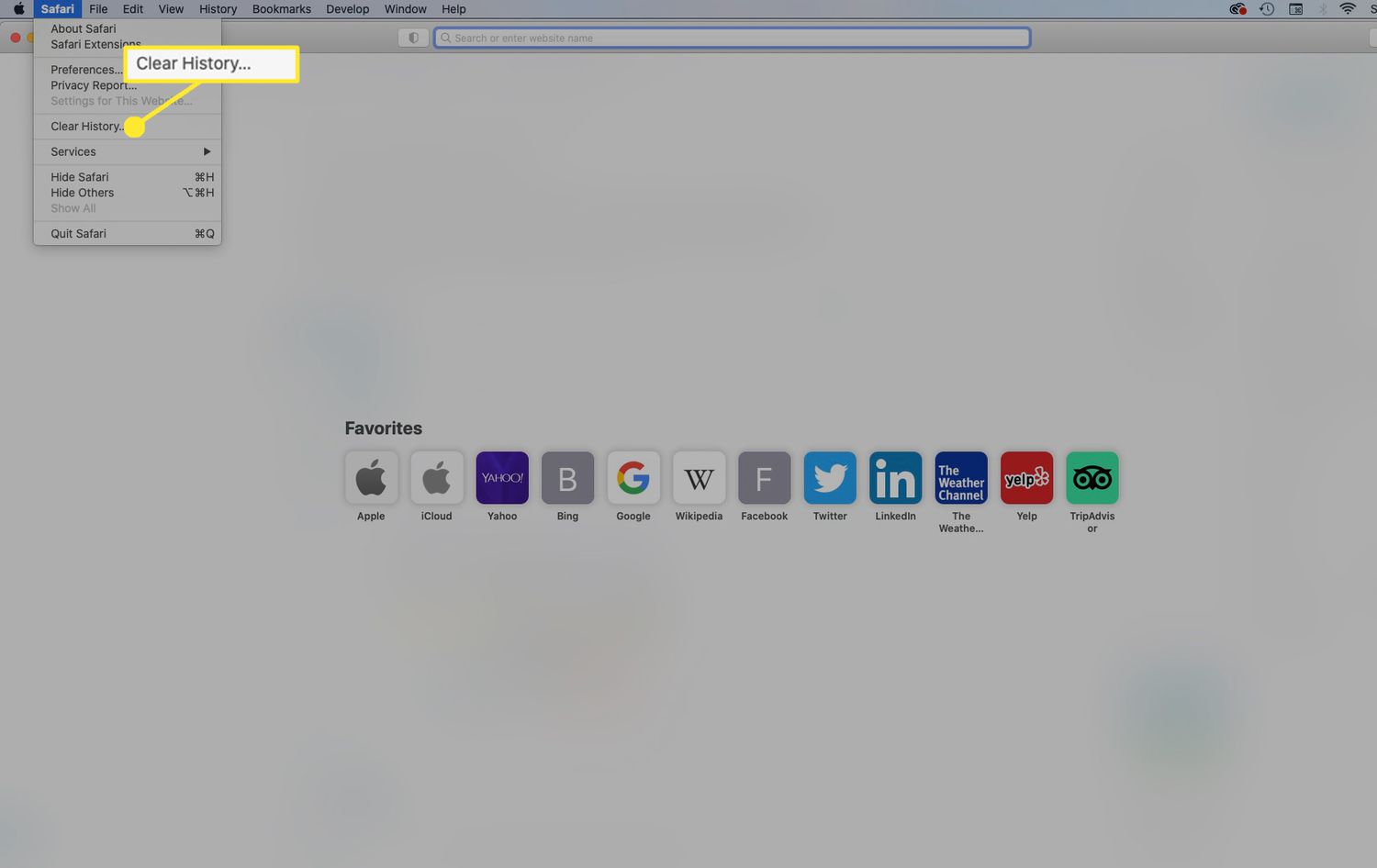
Introduction
Resetting Safari on your Mac can be a helpful solution when you encounter issues such as slow performance, unexpected crashes, or unresponsive web pages. By resetting Safari, you can clear out accumulated data, remove problematic extensions, and restore the browser to its default settings. This process can effectively resolve various browsing issues and enhance the overall performance of Safari.
Whether you're experiencing frequent crashes, encountering persistent pop-up ads, or noticing unusual behavior while browsing, resetting Safari can often provide a fresh start and resolve these issues. It's important to note that resetting Safari will clear your browsing history, cookies, and other website data, so it's essential to back up any important information before proceeding with the reset.
In this guide, we'll walk you through the step-by-step process of resetting Safari on your Mac. By following these instructions, you can effectively troubleshoot common browsing issues and ensure that Safari functions smoothly and efficiently. Let's dive into the details and learn how to reset Safari to optimize your browsing experience.
Step 1: Open Safari Preferences
To initiate the process of resetting Safari on your Mac, the first step is to access the Safari Preferences . This can be done by launching the Safari browser and locating the "Safari" option in the top menu bar. Upon clicking on "Safari," a drop-down menu will appear, and you should select "Preferences" from the list. Alternatively, you can use the keyboard shortcut "Command + ," to directly open the Preferences window.
Upon accessing the Preferences window, you will be presented with a range of customizable settings and options for Safari. This is where you can modify various aspects of the browser, including privacy settings, security preferences, and extensions. The Preferences window is a central hub for managing Safari's behavior and appearance, making it a crucial starting point for the process of resetting the browser.
Once you have opened the Preferences window, you are ready to proceed to the next step in the process of resetting Safari. This initial step sets the stage for the subsequent actions that will ultimately lead to a refreshed and optimized browsing experience. By accessing the Preferences window, you gain access to the underlying settings and configurations that govern Safari's functionality, allowing you to make informed adjustments to enhance the browser's performance.
In the following steps, we will delve deeper into the process of resetting Safari, leveraging the options and tools available within the Preferences window to ensure a comprehensive and effective reset. By navigating through the Preferences window and making the necessary adjustments, you can pave the way for a smoother and more efficient browsing experience with Safari on your Mac.
With the first step completed, you are now prepared to move on to the subsequent stages of the reset process, each of which plays a pivotal role in restoring Safari to its default state. As we progress through the remaining steps, you will gain a deeper understanding of the intricacies involved in resetting Safari and optimizing its performance for seamless browsing.
Next, we will explore the second step in the process, which involves navigating to the Advanced tab within the Safari Preferences window. This step is essential for enabling additional options that are instrumental in the comprehensive reset of Safari on your Mac. Let's continue our journey toward resetting Safari and revitalizing your browsing experience.
Step 2: Choose the Advanced Tab
After accessing the Safari Preferences window, the next crucial step in the process of resetting Safari on your Mac is to navigate to the Advanced tab. This tab houses a range of advanced settings and options that are integral to the comprehensive reset of the browser.
Upon entering the Advanced tab within the Safari Preferences window, you gain access to a plethora of advanced configurations that govern the behavior and functionality of the browser. These settings delve into the intricacies of Safari's operations, allowing for fine-tuned adjustments that can significantly impact the browsing experience.
One of the key features within the Advanced tab is the option to enable the Develop menu. This menu provides access to a variety of developer-oriented tools and functionalities that are typically hidden from the standard Safari interface. By enabling the Develop menu, you unlock a suite of powerful tools that can aid in troubleshooting and optimizing the browser's performance.
Enabling the Develop menu is essential for the subsequent steps in the reset process, as it grants access to critical options that facilitate the comprehensive restoration of Safari to its default state. These options include the ability to clear caches, disable extensions, and reset various aspects of the browser that may be contributing to performance issues.
In addition to enabling the Develop menu, the Advanced tab also offers the option to manage website data. This feature allows you to view and remove specific data stored by websites, including cookies, cached files, and other site-specific information. By managing website data, you can effectively clear out accumulated browsing data that may be impacting Safari's performance.
Furthermore, the Advanced tab provides access to a range of other advanced settings, such as those related to security, privacy, and website permissions. These settings offer granular control over how Safari interacts with websites and handles various types of content, empowering you to tailor the browser's behavior to align with your preferences and security requirements.
By choosing the Advanced tab within the Safari Preferences window, you position yourself to leverage the advanced configurations and options that are pivotal to the comprehensive reset of Safari on your Mac. This step sets the stage for the subsequent actions that will ultimately lead to a refreshed and optimized browsing experience, ensuring that Safari functions smoothly and efficiently.
With the Advanced tab explored and its significance in the reset process elucidated, you are now prepared to proceed to the next step, where you will enable the Develop menu and unlock a suite of powerful tools that will aid in the comprehensive restoration of Safari. Let's continue our journey toward resetting Safari and revitalizing your browsing experience.
Step 3: Enable the Develop Menu
Enabling the Develop menu within Safari is a pivotal step in the process of resetting the browser on your Mac. The Develop menu unlocks a suite of powerful tools and functionalities that are instrumental in troubleshooting, optimizing, and customizing the browsing experience. By enabling this menu, you gain access to a range of developer-oriented features that are typically hidden from the standard Safari interface, empowering you to delve into the inner workings of the browser and make informed adjustments to enhance its performance.
To enable the Develop menu, you will navigate to the Advanced tab within the Safari Preferences window, as outlined in the previous step. Once in the Advanced tab, you will find the option to "Show Develop menu in menu bar." By checking this option, you effectively enable the Develop menu, causing it to appear in the Safari menu bar alongside other standard options.
The Develop menu offers a wealth of tools and functionalities that cater to developers, power users, and individuals seeking to optimize their browsing experience. One of the key features within the Develop menu is the ability to access the Web Inspector, a powerful tool that allows you to inspect, debug, and modify the structure and behavior of web pages. The Web Inspector provides invaluable insights into the underlying code and elements of web pages, enabling you to diagnose issues, optimize performance, and customize the display of content.
In addition to the Web Inspector, the Develop menu grants access to options for disabling caches, disabling extensions, and resetting various aspects of the browser. These options are instrumental in the comprehensive reset of Safari, as they allow you to clear out accumulated data, remove problematic extensions, and restore the browser to its default settings. By leveraging the functionalities within the Develop menu, you can effectively troubleshoot common browsing issues and ensure that Safari functions smoothly and efficiently.
Enabling the Develop menu within Safari empowers you to harness the full potential of the browser, providing access to advanced tools and functionalities that are essential for the comprehensive reset and optimization of Safari on your Mac. By enabling this menu, you position yourself to leverage a suite of powerful features that can aid in troubleshooting, customizing, and enhancing the browsing experience, ultimately leading to a refreshed and optimized Safari browser .
With the Develop menu enabled, you are now prepared to proceed to the next step in the reset process, where you will utilize the functionalities within the Develop menu to initiate the comprehensive reset of Safari on your Mac. Let's continue our journey toward resetting Safari and revitalizing your browsing experience.
Step 4: Reset Safari
Resetting Safari on your Mac involves a series of critical actions that collectively restore the browser to its default state, effectively clearing out accumulated data, removing problematic extensions, and optimizing its performance. This process is instrumental in troubleshooting common browsing issues and ensuring that Safari functions smoothly and efficiently. By following the steps outlined below, you can initiate the comprehensive reset of Safari and revitalize your browsing experience.
Clear Browsing History and Data
The first step in resetting Safari involves clearing the browsing history and data. This action effectively removes the record of websites visited, searches conducted, and other browsing activities. To accomplish this, you will navigate to the "History" menu in the Safari menu bar and select "Clear History." Upon doing so, a window will appear, allowing you to choose the time range for which you wish to clear the history. Selecting "Clear History" will remove the specified browsing history, contributing to the comprehensive reset of Safari.
Remove Website Data and Cookies
In addition to clearing the browsing history, it is essential to remove website data and cookies to further optimize Safari. This action involves accessing the "Privacy" tab within the Safari Preferences window and clicking on "Manage Website Data." Here, you can view and remove specific data stored by websites, including cookies and cached files. By removing this data, you effectively clear out accumulated browsing data that may be impacting Safari's performance, contributing to the comprehensive reset of the browser.
Disable Extensions and Plug-Ins
Another critical step in resetting Safari is to disable extensions and plug-ins that may be contributing to browsing issues. This action involves accessing the "Extensions" tab within the Safari Preferences window and unchecking the boxes next to each installed extension. Additionally, you can navigate to the "Security" tab to manage website plug-ins and disable any that may be causing issues. By disabling extensions and plug-ins, you eliminate potential sources of browsing problems, paving the way for a refreshed and optimized browsing experience.
Reset Safari Settings
The final step in the reset process involves resetting Safari's settings to their default configurations. This action is carried out by navigating to the "General" tab within the Safari Preferences window and clicking on "Reset Safari." A window will appear, allowing you to choose which settings to reset, including clearing the cache, removing cookies, and resetting the top sites. By selecting the desired options and proceeding with the reset, you effectively restore Safari to its default state, resolving common browsing issues and optimizing its performance.
By following these steps to reset Safari on your Mac, you can effectively troubleshoot common browsing issues and ensure that the browser functions smoothly and efficiently. This comprehensive reset clears out accumulated data, removes problematic extensions, and restores Safari to its default settings, ultimately revitalizing your browsing experience and enhancing the overall performance of the browser.
In conclusion, resetting Safari on your Mac is a valuable troubleshooting technique that can effectively address a range of browsing issues and optimize the performance of the browser. By following the step-by-step process outlined in this guide, you can initiate a comprehensive reset that clears out accumulated data, removes problematic extensions, and restores Safari to its default settings, ultimately revitalizing your browsing experience.
Through the process of resetting Safari, you gain the ability to clear browsing history and data, remove website data and cookies, disable extensions and plug-ins, and reset Safari's settings to their default configurations. These actions collectively contribute to the restoration of Safari to a pristine state, free from the clutter and issues that may have been impacting its performance.
Upon completing the reset process, you can expect to experience a smoother and more efficient browsing experience with Safari. The removal of accumulated data and cookies, coupled with the disabling of problematic extensions and the restoration of default settings, can lead to improved stability, faster page loading times, and a more responsive browsing interface.
Furthermore, the ability to access the Develop menu and leverage advanced tools within Safari empowers you to take control of the browser's behavior and optimize its performance according to your preferences. This level of customization and fine-tuning ensures that Safari aligns with your specific browsing needs, providing a tailored and optimized experience.
It's important to note that resetting Safari will clear your browsing history, cookies, and other website data, so it's essential to back up any important information before proceeding with the reset. Additionally, after completing the reset, you may need to reconfigure certain preferences and re-enable desired extensions to tailor Safari to your specific requirements.
By incorporating the insights and techniques presented in this guide, you are equipped to effectively troubleshoot common browsing issues and ensure that Safari functions smoothly and efficiently. The comprehensive reset process enables you to revitalize your browsing experience, setting the stage for seamless and enjoyable interactions with the Safari browser on your Mac.
In essence, resetting Safari serves as a valuable maintenance practice, allowing you to refresh the browser and optimize its performance, ultimately enhancing your overall browsing experience and productivity. Embracing the process of resetting Safari empowers you to take proactive steps in maintaining a smooth and efficient browsing environment, ensuring that Safari remains a reliable and effective tool for accessing the web on your Mac.
Leave a Reply Cancel reply
Your email address will not be published. Required fields are marked *
Save my name, email, and website in this browser for the next time I comment.
- Crowdfunding
- Cryptocurrency
- Digital Banking
- Digital Payments
- Investments
- Console Gaming
- Mobile Gaming
- VR/AR Gaming
- Gadget Usage
- Gaming Tips
- Online Safety
- Software Tutorials
- Tech Setup & Troubleshooting
- Buyer’s Guides
- Comparative Analysis
- Gadget Reviews
- Service Reviews
- Software Reviews
- Mobile Devices
- PCs & Laptops
- Smart Home Gadgets
- Content Creation Tools
- Digital Photography
- Video & Music Streaming
- Online Security
- Online Services
- Web Hosting
- WiFi & Ethernet
- Browsers & Extensions
- Communication Platforms
- Operating Systems
- Productivity Tools
- AI & Machine Learning
- Cybersecurity
- Emerging Tech
- IoT & Smart Devices
- Virtual & Augmented Reality
- Latest News
- AI Developments
- Fintech Updates
- Gaming News
- New Product Launches
5 Ways to Improve IT Automation
- What is Building Information Modelling
Related Post
Sla network: benefits, advantages, satisfaction of both parties to the contract, what is minecraft coded in, how much hp does a diablo tuner add, what is halo-fi, what is halo lock iphone, related posts.
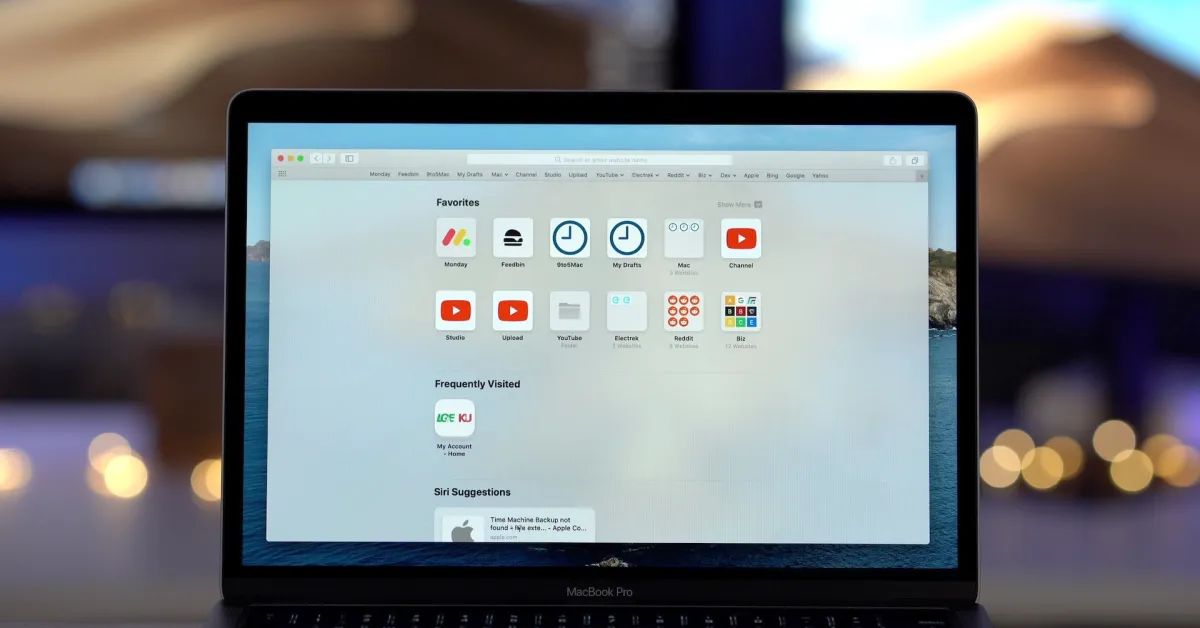
Why Does Safari Not Work On My Mac
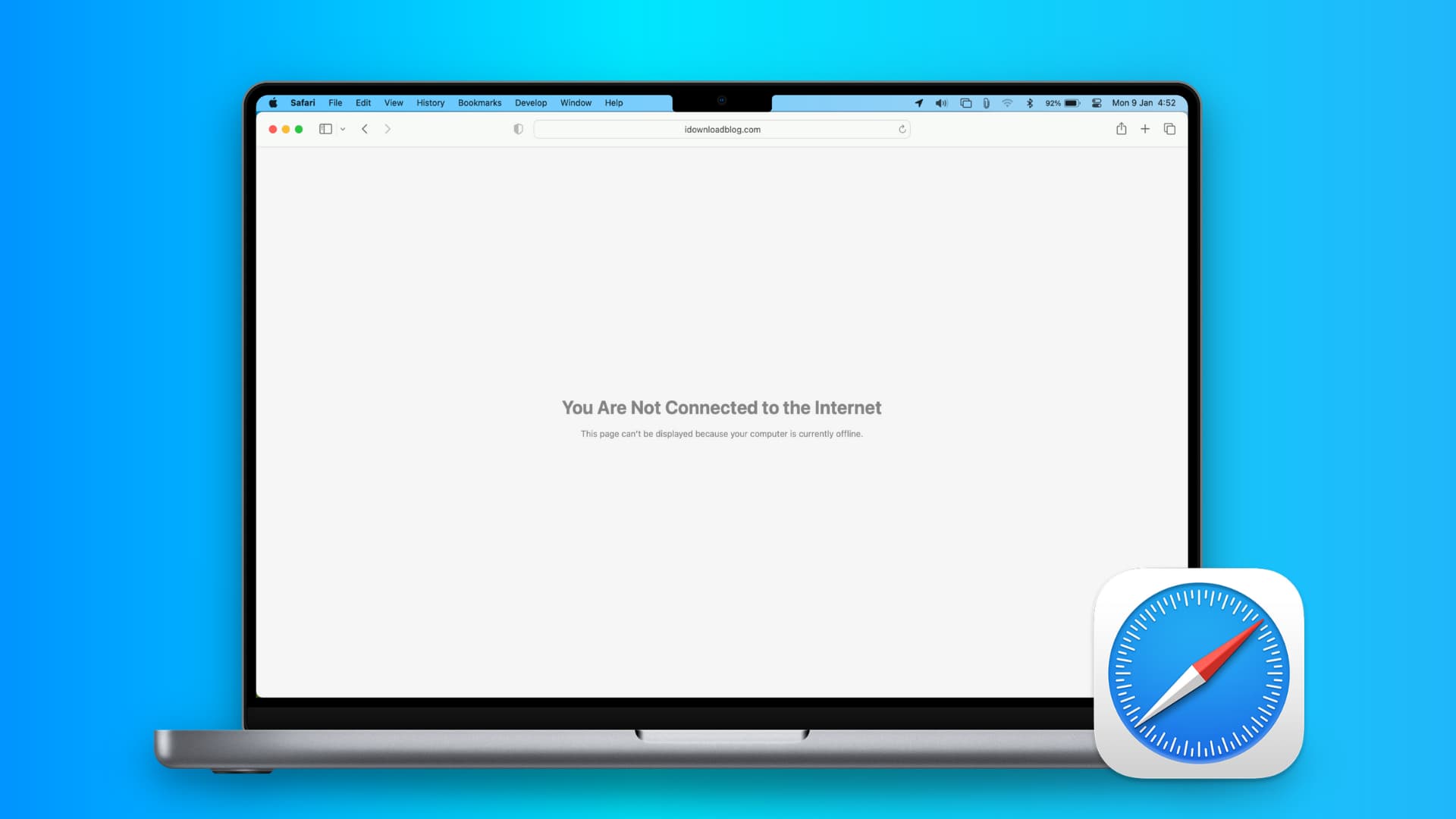
Why Is Safari Not Loading Websites
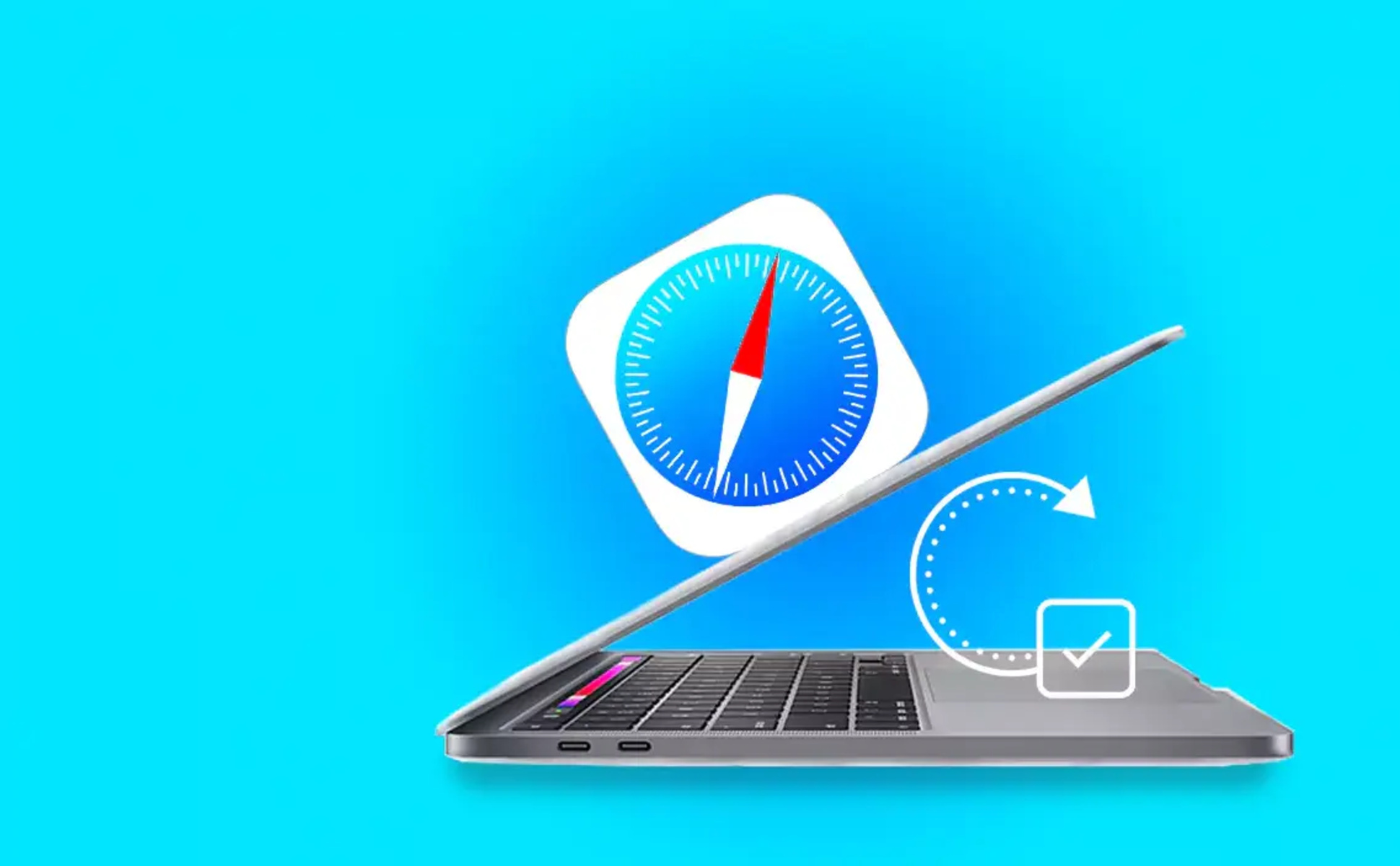
How Do I Update Safari When It Says No Updates Available?

Why Does Safari Keep Opening Old Tabs
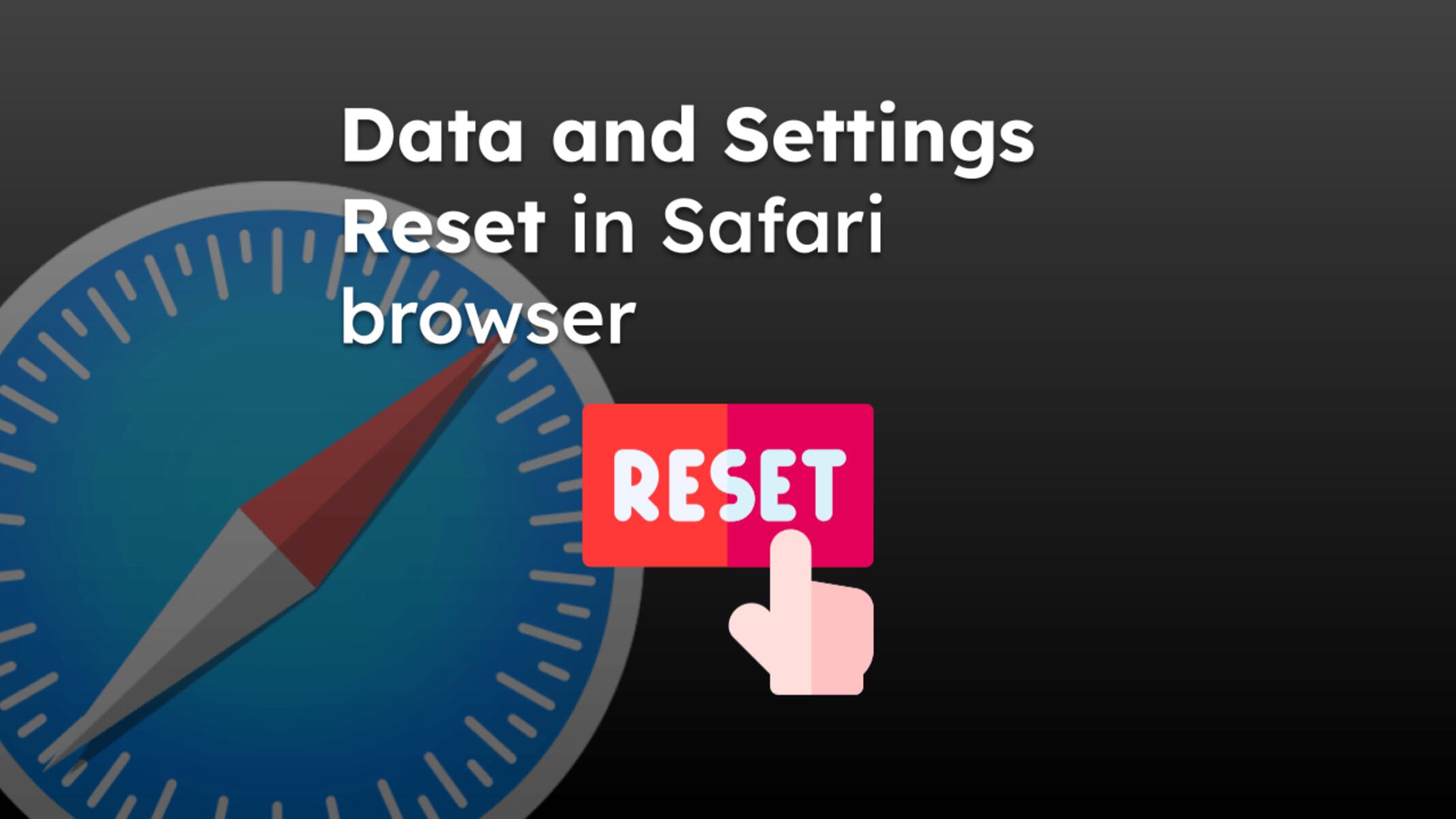
What Is Reset Safari
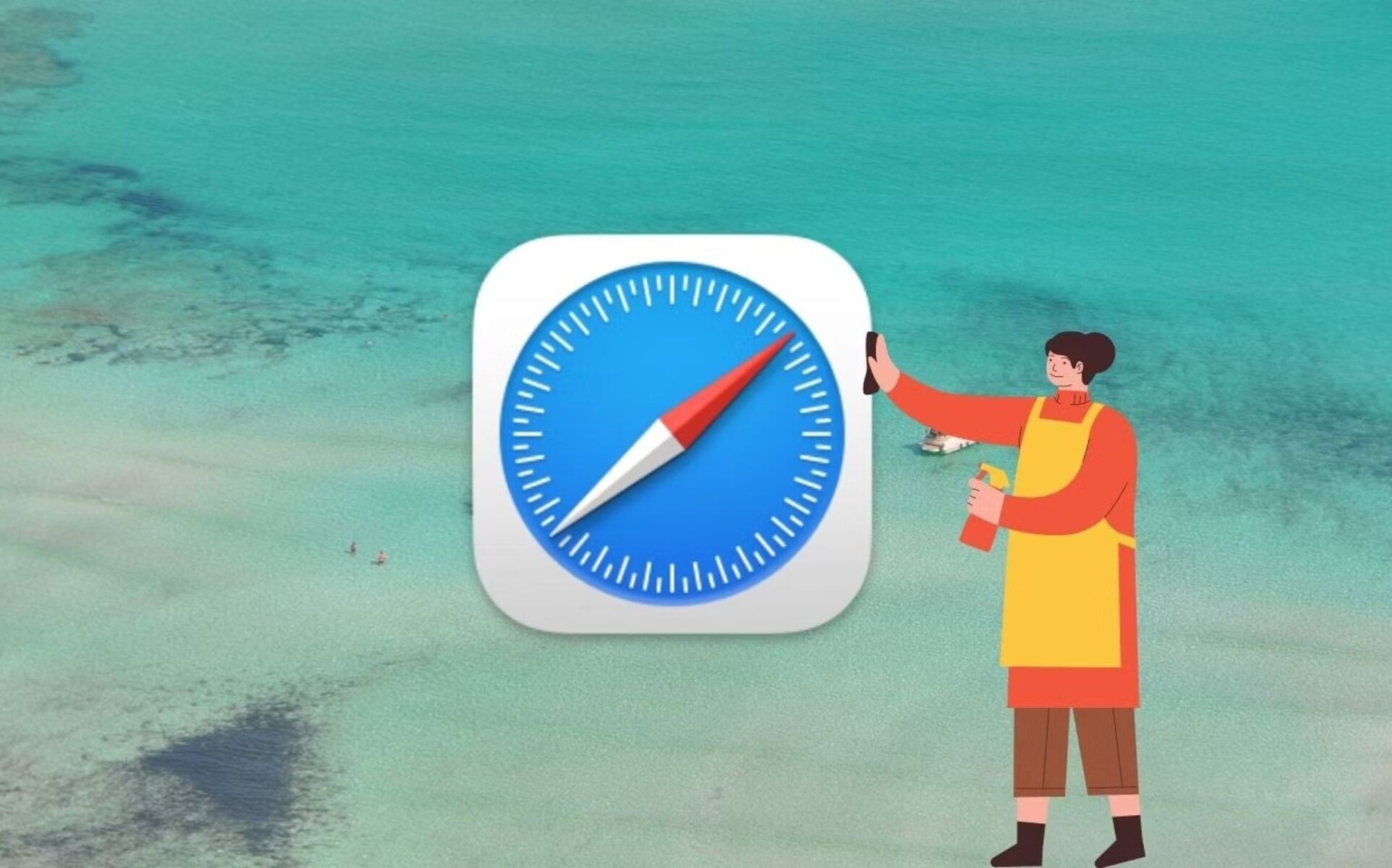
How To Reset Safari 8.0.4
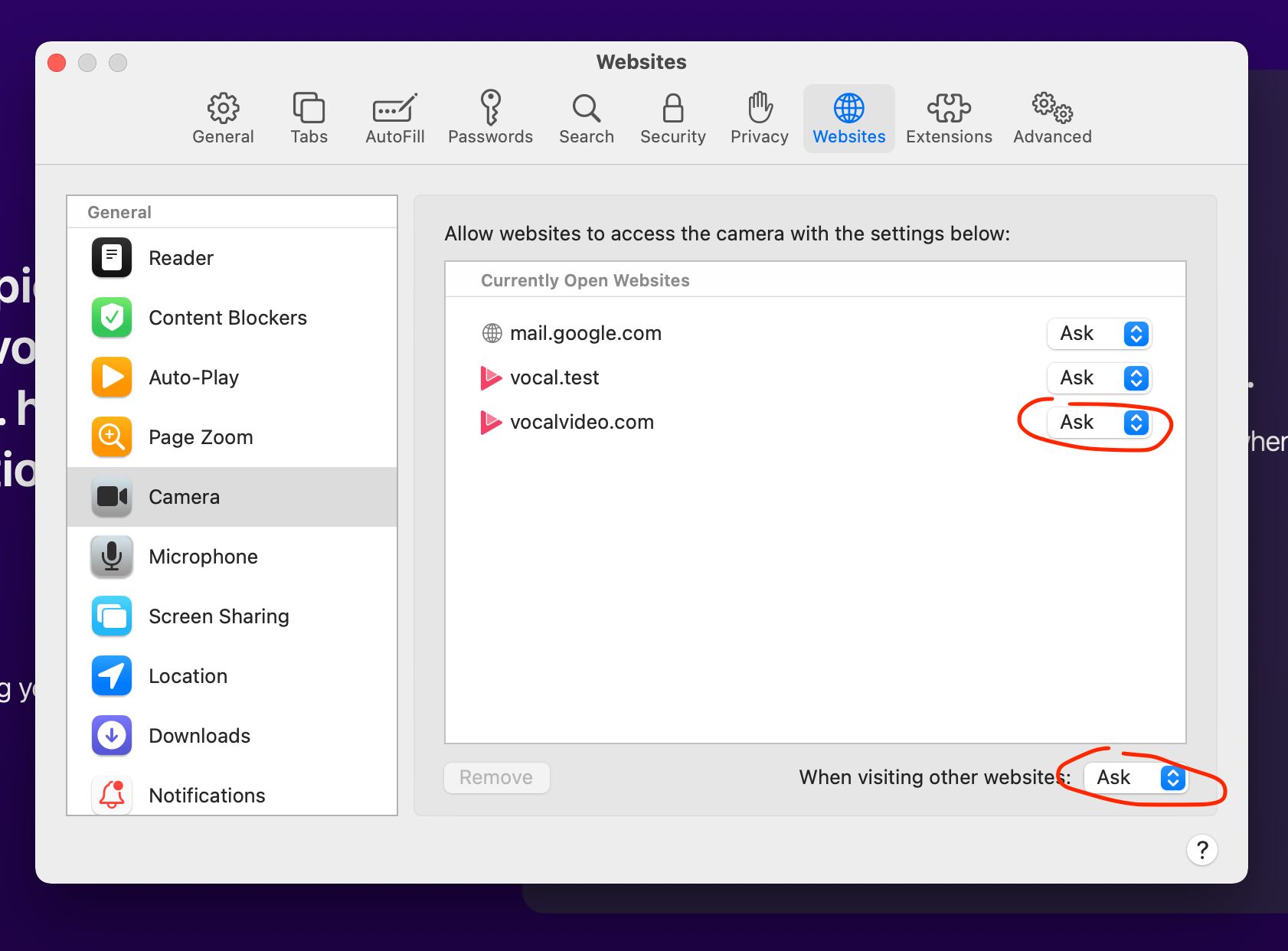
How To Allow Camera Access On Safari Mac

How To Restart Safari On Macbook
Recent stories.

What is Building Information Modelling?

How to Use Email Blasts Marketing To Take Control of Your Market

Learn To Convert Scanned Documents Into Editable Text With OCR

Top Mini Split Air Conditioner For Summer

Comfortable and Luxurious Family Life | Zero Gravity Massage Chair

Fintechs and Traditional Banks: Navigating the Future of Financial Services

AI Writing: How It’s Changing the Way We Create Content

- Privacy Overview
- Strictly Necessary Cookies
This website uses cookies so that we can provide you with the best user experience possible. Cookie information is stored in your browser and performs functions such as recognising you when you return to our website and helping our team to understand which sections of the website you find most interesting and useful.
Strictly Necessary Cookie should be enabled at all times so that we can save your preferences for cookie settings.
If you disable this cookie, we will not be able to save your preferences. This means that every time you visit this website you will need to enable or disable cookies again.
- Irresistible Tech Gifts for That Special Dad
- Killer Smartphone Deals We Love
How to Reset Safari to Default Settings
Restoring default settings is a multistep process
:max_bytes(150000):strip_icc():format(webp)/ScottOrgera-f7aca23cc84a4ea9a3f9e2ebd93bd690.jpg)
What to Know
- First, remove the browser history: Select Safari in the menu bar > Clear History , then select All History > Clear History .
- Remove cookies: Safari > Preferences . Select the Privacy tab > Manage Website Data > Remove All .
- Clear cache: Safari > Preferences . Advanced > Select Show Develop menu in menu bar . Exit. Develop > Empty Caches .
This article explains how to reset Safari to default settings by removing Safari's history and cookies, clearing the cache, and disabling extensions. Instructions apply to Safari versions 11 through 14 and iOS.
Remove Browser History
The first step when resetting Safari is to remove your browser history. When you clear your browsing history, Safari removes data such as recent searches, the frequently visited site list, web page icons, the history of web pages you've visited, and more.
From Safari's menu bar, select Safari > Clear History
In the drop-down menu, select All History .
Select Clear History to complete the process.
To clear a particular website instead, navigate to History > Show History , select the website you want to clear, and press Delete .
Remove Cookies
When you remove all cookies from Safari, you'll lose personal registration data such as your name and address, shopping cart contents, preferred web page layouts, and more.
From Safari's menu bar, select Safari > Preferences .
Select the Privacy tab.
Select Manage Website Data .
Select Remove All .
Select Remove Now .
Select Done .
Clear Safari's Cache
When you clear Safari's cache, you're removing stored website data.
Select the Advanced tab.
Place a check next to Show Develop menu in menu bar , and then exit out of Preferences.
From Safari's menu bar, select Develop > Empty Caches .
Disable or Uninstall Extensions
Safari extensions are like mini-apps that add functionality to the browser. If you're trying to reset Safari, you'll want to disable or uninstall any extensions.
Select the Extensions tab.
Select an extension, and then deselect the checkbox next to the extension to disable it.
Many extensions have several sub-extensions, so you'll need to uncheck all of them.
After you've disabled an extension, you can uninstall it. Select Uninstall .
You'll see a message that the extension is part of an application, and that you'll need to remove the application. Select Show in Finder .
Finder will open with the app selected. Right-click on the application and select Move to Trash .
Enter your password and select OK . You've deleted the extension.
Clear Website Data on Safari for iOS
To clear Safari's settings on an iPhone or iPad:
Open the iOS device's Settings app.
Scroll down and select Safari .
Under Privacy & Security , select Clear History and Website Data .
Select Clear History and Data to confirm.
Get the Latest Tech News Delivered Every Day
- How to Clear Private Data, Caches, and Cookies on Mac
- How to Delete and Clear Cookies on an iPhone
- Speed Up Safari With These Tuneup Tips
- How to Manage Browsing History on Safari for iPad
- How to Manage Cookies in the Safari Browser
- How to Clear Your Search Bar History
- How to Clear Internet Cache in Every Major Browser
- How to Clear Cookies for a Specific Site
- How to Delete Cookies in Every Major Browser
- How to Clear Your iPhone Cache
- 3 Ways to Clear Cache on an iPad
- Managing History and Other Private Data in Safari for macOS
- Add More Features by Turning on Safari's Develop Menu
- How to Activate and Use Responsive Design Mode in Safari
- How to Manage Your Browsing History in Safari
- How to Fix a Google Chrome Black Screen Issue

How to fully reset Safari on your Mac

Being the default browser shipped with every Mac, you are very likely using Safari as your main way of accessing the Web.
Therefore, if something goes wrong where Safari either loads and runs slowly, crashes on startup, or is otherwise not functioning correctly, then you might find yourself in a bit of a frustrating situation.
If you need to reset aspects of Safari in order to regain functionality, then even though the options for doing so are somewhat scattered, you can still use them to regain use of your browser.
Remove site history
Safari has its built-in tools for clearing temporary data that may be causing problems.
To do this, go to the Safari menu and choose the option to Clear History and Website Data.

If the problem you are experiencing only happened in the last hour or the past day, then you can try choosing the option here for encompassing that timeframe, otherwise you can remove all history data in this menu.
Alternatively, if you are finding problems happening only with one Web site you visit, then you can remove this data on a per-site basis:
- Go to the Privacy section of Safari’s preferences.
- Click the Details button that appears under the “Remove All Website Data” button.
- Search for your site, and then remove only it from the list.
Clear Safari’s Web caches
Apple has somewhat hidden the options for clearing Safari’s caches (temporary local storage for a number of different settings and configurations), but they are still available to clear.
First, go into Safari in the Apple menu bar and then select Settings.

Once you’re in Settings, go to the Privacy option. Here, you’ll find a button for Manage Website Data – press it, then choose to clear however far back you wish to go.


Disable Extensions
Extensions give additional functions to Safari, but may also cause some problems if they contain bugs.
Therefore, try going to the Extensions section of Safari’s preferences and sliding the setting to “Off.”
Alternatively, you can try disabling Extensions on an individual basis (each should have a checkbox for enabling/disabling), but first turning them off globally and then testing Safari will help indicate whether these are contributing to the problem.
Also be sure you use the Updates button in these preferences to check for and install any new versions of your extensions.
Remove the Safari Preferences File
First, go into Finder, then select ‘Go’ and ‘Go to Folder’ from the Apple menu.

Type ~/Library/Preferences/ and press Enter. Find the file named com.apple.Safari.plist and move it to the Trash. This will reset your Safari preferences to default.
Finally, restart your device
The last thing that you need to do to fully reset Safari is to shutdown your Macbook, and then restart it.
Once you do this, you should find that your Safari browser – along with history and preferences – has been reset.
How to Restart Mac (from Terminal)
How to add a printer on a Macbook air
At Mac Issues, we're dedicated to helping you learn how to use your Macbook properly. With tutorials, how-to troubleshooting guides & real reviews, hopefully we can make your day that little bit easier.
Read more from Mac Issues

Thanks for Visiting MacIssues.com.
MacIssues is dedicated to helping you make the most of your Macbook.
© MacIssues.com 2024. Not affiliated with Apple Inc.

How To Fully Reset Safari On Mac
This article explains how you can fully reset Safari on your Mac. You might need to do this if Safari on your Mac runs very slowly, crashes often, acts bizarre, or functions incorrectly.
See also: Your System Is Infected With (3) Viruses
Safari is included with the macOS operating system.
How to reset Safari
1-Remove site history
There are two ways to do this. If you want to remove particular web sites (e.g., a web site is giving you problems whenever you visit) then try the second option. Please also note that if you are using other Apple devices (iOS devices or other Macs), if you turn on Safari in iCloud preferences with the same Apple ID, your site browsing history will be removed from all of them.
See also: How To Change Default Search Engine in Safari
When you do this, you will be removing history of web sites you visited, recent searchers, list of download items, frequently visited sites list, web sites that asked to use your located and to send you notifications.
- Open Safari
- Click Safari located in the menu bar in the top left hand corner of your screen
- Click Clear History
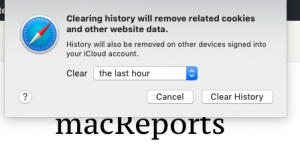
- Click the Clear History button
- Click Preferences
- Click the Privacy tab
- Click the manage Website Data button
- Here you can remove everything, or you can remove specific web sites. You can also search to find a specific web site.
2-Clear web caches
Here is how you can clear Safari’s caches. Caches are images and videos, or the layouts for entire web pages you browsed.
- In the Safari app, click Safari
- Click the Advanced tab
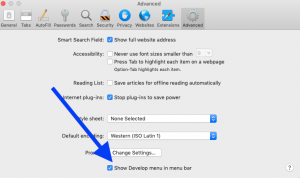
- Close the Preferences window
- Now you will see a new menu bar item called ‘Develop’
- Click Develop
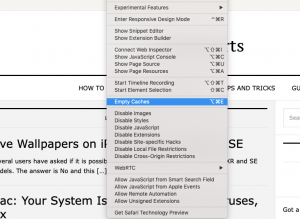
Disable Safari extensions
Extensions are small programs that extends your Safari’s functionalities. They add new features to let you enhance and customize your browsing experience. But some may have bugs and thus cause problems. And you may want to turn them off. Here is how:
- Choose Safari from the Safari menu bar
- Click the Extensions tab
- For each extension, you can use the checkbox to enable or disable that particular extension.
- You can also uninstall extensions.
Disable Safari plugins
Please note that Safari is no longer supporting most plugins. You can however view and manage the plugins you have installed. Here is how:
- Click Safari
- Click the Websites tab
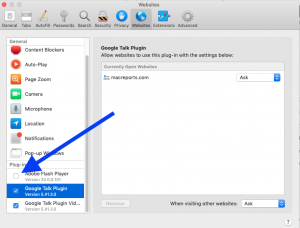
- When you are done, close the window
See also: How To See The Full Web Site Address In Safari URL Bar
Dr. Serhat Kurt worked as a Senior Technology Director specializing in Apple solutions for small and medium-sized educational institutions. He holds a doctoral degree (or doctorate) from the University of Illinois at Urbana / Champaign and a master’s degree from Purdue University. He is a former faculty member. Here is his LinkedIn profile and Google Scholar profile . Email Serhat Kurt .
Similar Posts
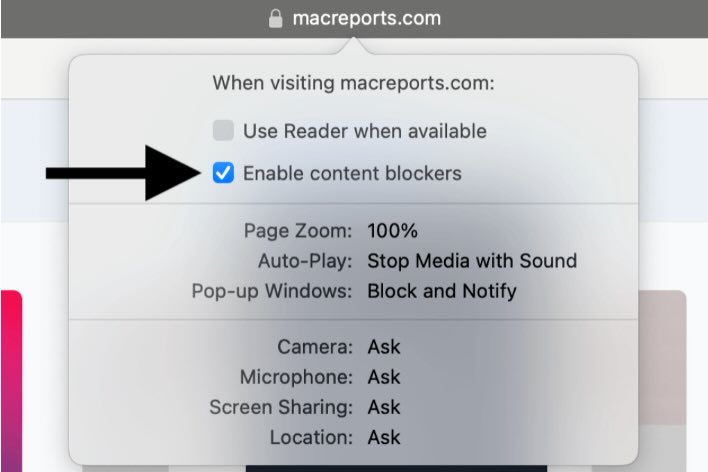
How to Disable or Enable Content Blockers for a Website in Safari on Mac
Annoying ads and popups may easily clutter your Safari screen. Safari’s content blocking feature offers a smooth web browsing experience. This feature enables users to control their browsing experience by blocking certain types…
Your Setup Couldn’t Be Started Because Of An Unexpected Error, Fix
You may experience problems with your iCloud Mail, Contacts, and Calendars in Outlook on Windows. One of the most common issues is the setup error message below: See also: How To Transfer Photos…
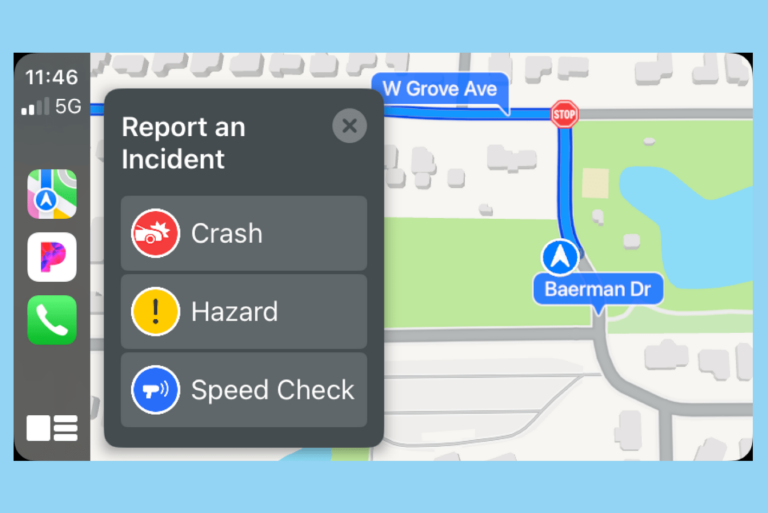
How to Report a Speed Check in Apple Maps Using Siri, iPhone or CarPlay
If you use Apple Maps often, you have probably heard Siri warning you about a speed check ahead. These reports come from other iPhone users who were driving the same road. In this…
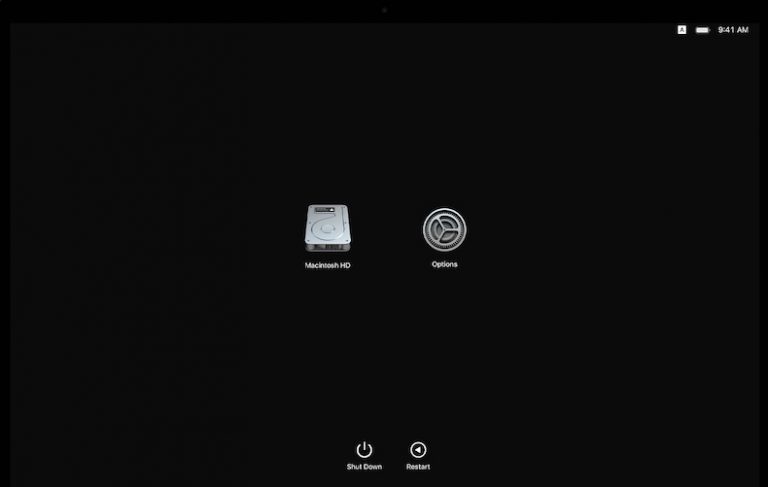
How to Start Up an Apple Silicon Mac (M Chip) in macOS Recovery
This article explains how you can access Recovery Mode on a Mac with Apple silicon. These Macs contain Apple M chips. On an Intel Mac, the process is different. You use the keyboard…
How to Upload iMovie Videos to YouTube
You can share your iMovie projects on YouTube. In this article, I explain how you can use the export options in iMovie on your Mac, iPhone, or iPad so that you can upload…
How to Stop Text Messages and iMessages from Going to iPad from iPhone
This article explains how you can stop your iPhone text messages and iMessages from going to your iPad, so when you get a message, it won’t appear on your iPad. If you are…
I Have been having this for about a week now. I Have tried getting rid of the Cookies and what not, restarted Safari, everything still doesn’t work. Did Apple do something to Safari? Like I Can use Chrome and everything is fine, but I go to Youtube on Safari and login and I get a blank screen. I am not logged in I Can see the page it’s only when I login is when I can’t see anything. Again not the case with Chrome. Does anyone one know what is going on?
I have the same problem
Safari 14 I cannot attach photos into facebook, its takes forever to open any websites, i have cleared the history and still takes forever, its like something is running in the background making my computer run slow. We don’t even use this computer very much as we do most surfing on our iPad, we have att wifi which shows 4 bars on the wifi icon. Can the problem be to many files on the computer or in the iCloud?
No facebook or youtube since updating to Big Sur 11.0 Safari is not working properly.
Safari not working at all…i couldn’t even open http://www.google.com
Hi, I have done all steps recommended, YouTube still does not play on MacBook Air. YouTube opens alright, but when I try playing a video, it won’t play, just that circle on the screen that keeps rotating. Can you please help me solve this problem. I am not computer savvy. Thank you, Liviu
Leave a Reply Cancel reply
Your email address will not be published. Required fields are marked *
Categories:
Trending Story: Messages App Tips & Tricks | Spring Wallpapers | Easter Wallpapers | iOS 17.4 New Emojis
How to Reset Safari on Mac to Default (Completely – Sonoma)
Key Takeaway: Resetting the Safari browser on your Mac can significantly improve its performance by clearing junk files such as caches, browsing history, website data, extensions, and plug-ins. While there's no Reset button, you can achieve this by individually clearing these aspects following simple steps outlined in the article.
Safari is arguably the best web browser for MacBook and Mac computers. This may be attributed to the numerous improvements it has received over the years—especially in security and privacy. However, your Safari browser may start running slowly with time.
IN THIS ARTICLE
This is often caused by the accumulation of junk and temporary files created by the browser over time. Resetting the browser clears such files, allowing it to run much faster. As you may be aware, the Safari browser on Mac no longer has a Reset button for this purpose.
However, you can still reset the browser to its defaults by individually clearing the history, caches, plug-ins, and extensions on the browser. Get to know how you can reset the Safari browser on your Mac in just a few steps.
How Do I Reset Safari Browser?
Since the unveiling of the OS X Mountain Lion 10.8 , Apple no longer adds a Reset button to the Safari browser. As such, you cannot just reset the Safari browser in a single click as you would other popular browsers.
Instead, you need to clear the following aspects individually:
- The Browsing History
- Website Data
- Browser Cache
- Extensions
- Plug-ins
Note : Clearing such temporary files on the Safari browser will cause you to lose important auto-fill data, including usernames and passwords.
Here are the five things you need to do to reset the Safari browser on your Mac:
Reset the Safari Cache
Whenever you visit a web page, the browser saves the media files on that page as caches in a temporary folder—within the Library folder. Leveraging this saved information, Safari can reopen such web pages much faster.
While this is a beneficial functionality, these files accumulate over time and may occupy a significant amount of disk space. If not checked, this may slow or even cause the browser to crash. As such, it is advisable to clear your Safari browser cache as follows:
Method 1: Clearing the Safari Cache from Its Preferences
To clear the cache files from Safari preferences, proceed as follows:
Step 1 : Launch the Safari browser from the Launchpad on your Mac. Step 2 : Click on Safari —located towards the top-left corner of the browser homepage. Step 3 : Select Settings/Preferences from the drop-down menu that comes up.

Step 4 : Now navigate to the Advanced tab, then click on the checkbox adjacent to the Show Develop menu on the menu bar to enable it. This should display a Develop tab on the menu bar.
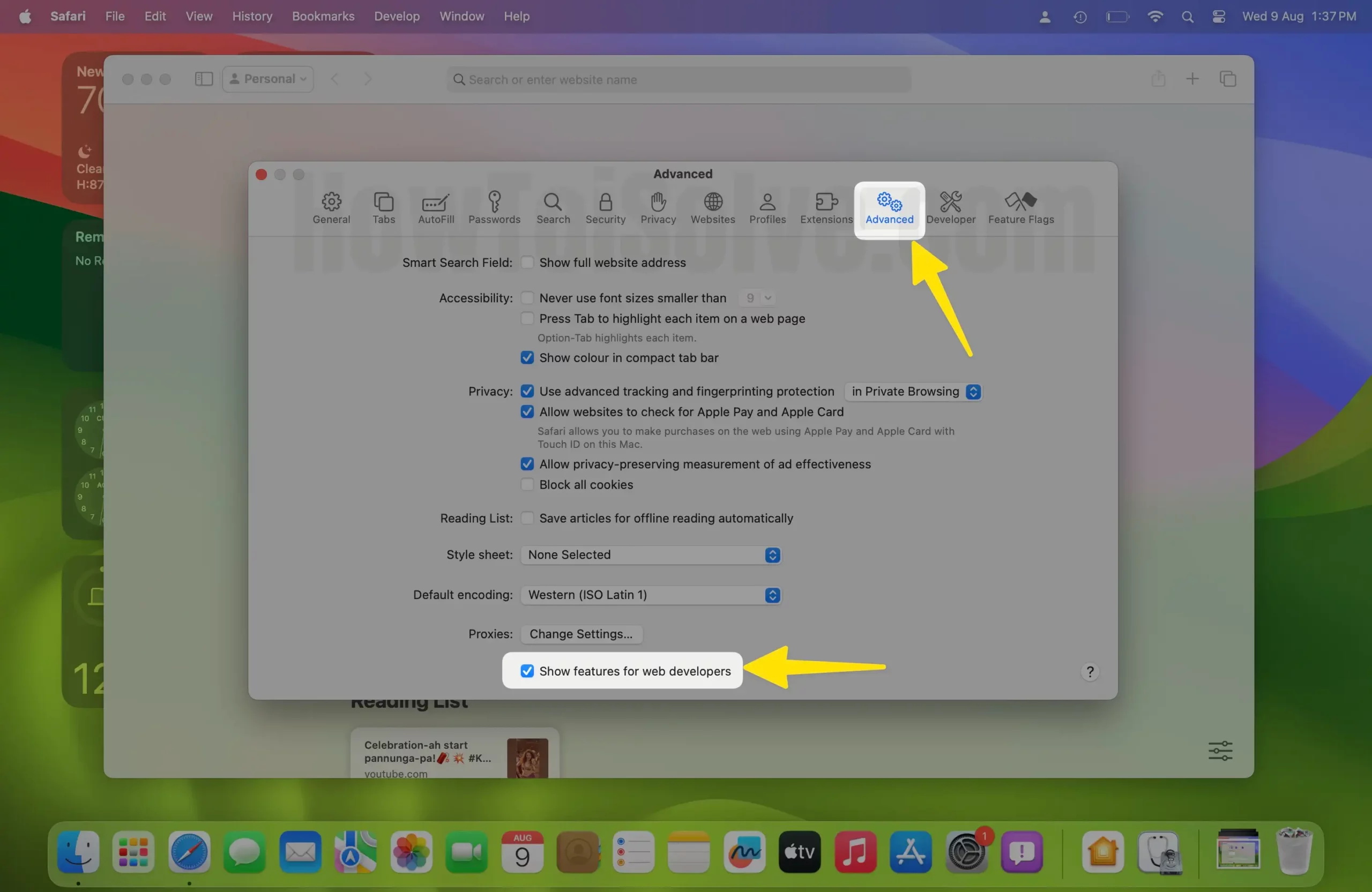
Step 5 : Click on this Develop menu command and choose the Empty Caches for all Profiles option (macOS Sonoma added the Feature of Create Profile in Safari & Save Cache for Different Profile).

Alternatively, you could also press the Command + E + Option key shortcut to clear the cache after enabling the Develop tab in Step 4 above. Once the Develop menu command is activated on your Safari browser, you can access it anytime you need to clear the cache.
Method 2: Manually Clear Safari Cache
If you are running macOS 10.14 or earlier macOS version on your Mac, you could also clear Safari Cache. These operating systems save all temporary files within the Library folder. To manually clear Safari Caches:
Step 1 : Open Finder Using Spotlight Search on Mac.
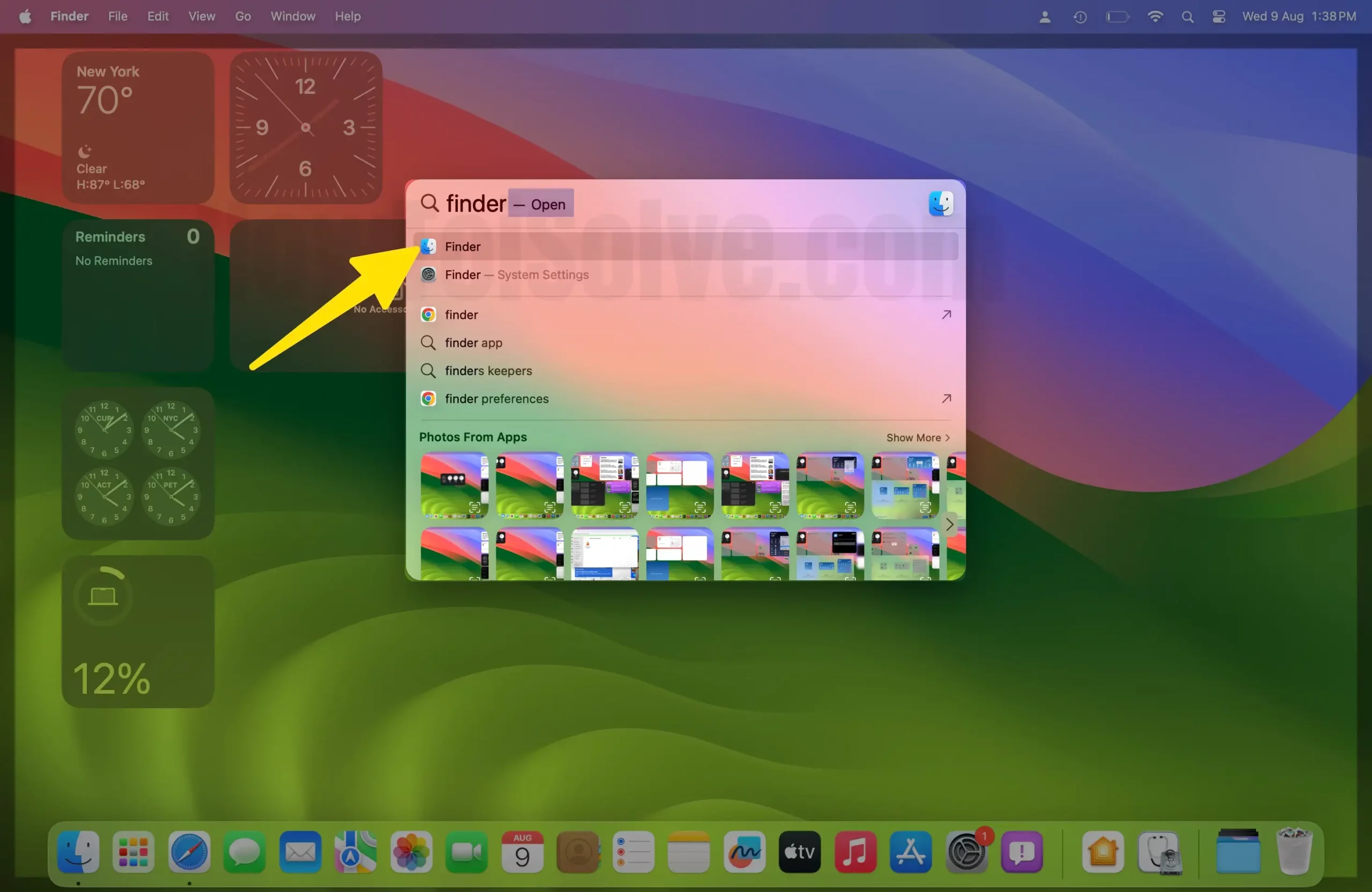
Step 2 : From the top menu Go > Go to Folder .

Step 3: Navigate to ~/Library/Caches hit the return and open the Caches folder.

Step 4 : Delete Only Safari Cache folders, use the search box in the finder window > Select Caches folder > Select Folders and Move to the bin .
Note : Be careful while deleting files from the Library folder, as removing essential files may end up damaging the system.
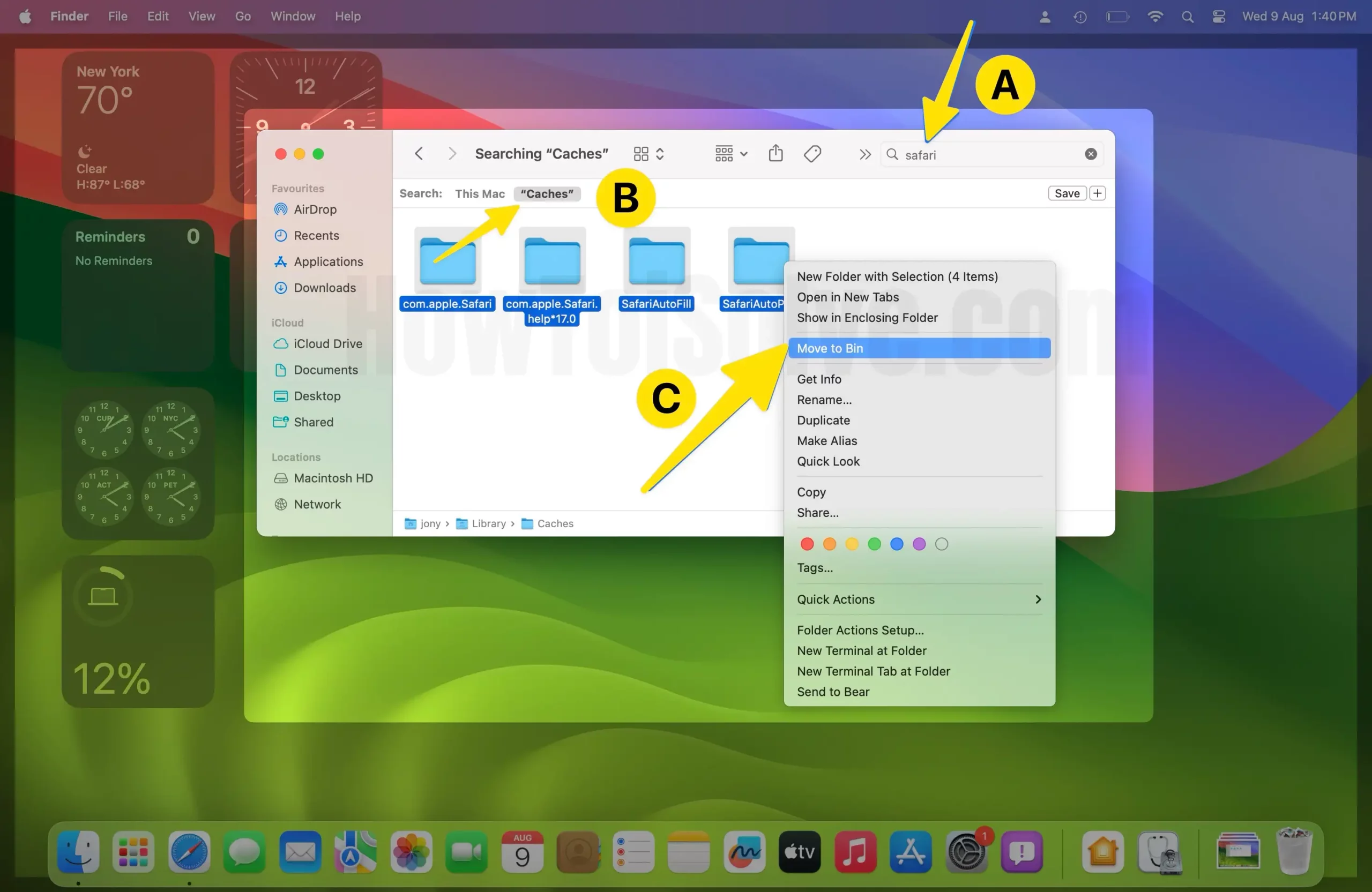
Or, select and then remove all the unnecessary files.
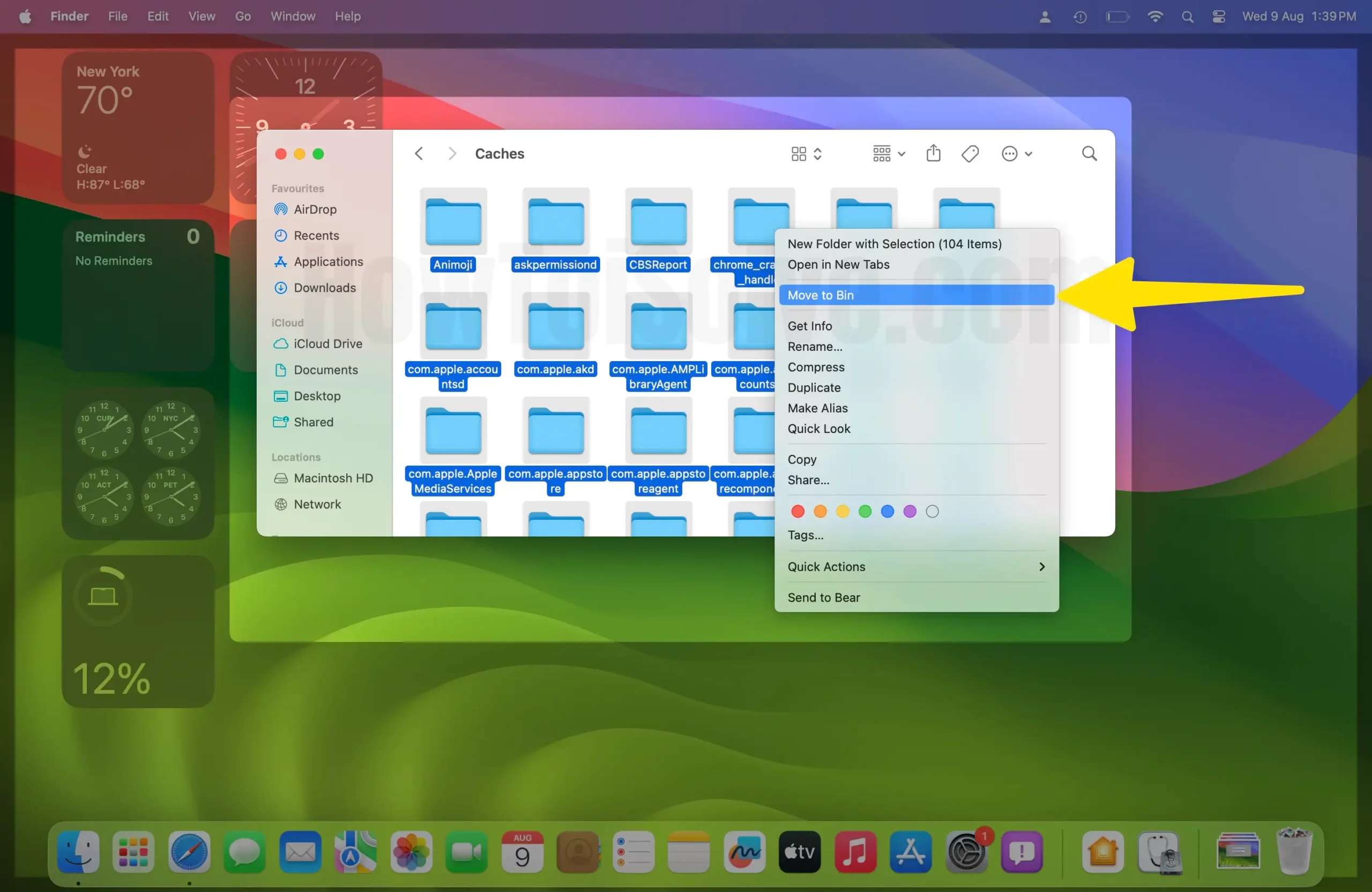
Clear Safari Browsing History
Just as is the case with other browsers, Safari keeps a history of the web pages you have visited in the recent past. To reset Safari on Mac, you need to clear this History as well. To clear the Safari browsing history on Mac:
Method 1: Manually Clear the Browsing History on Safari
The first option is to just wipe the history out manually, as illustrated below:
Step 1 : From the Launchpad , open the Safari browser. Step 2 : From the Menu bar , select the History tab.
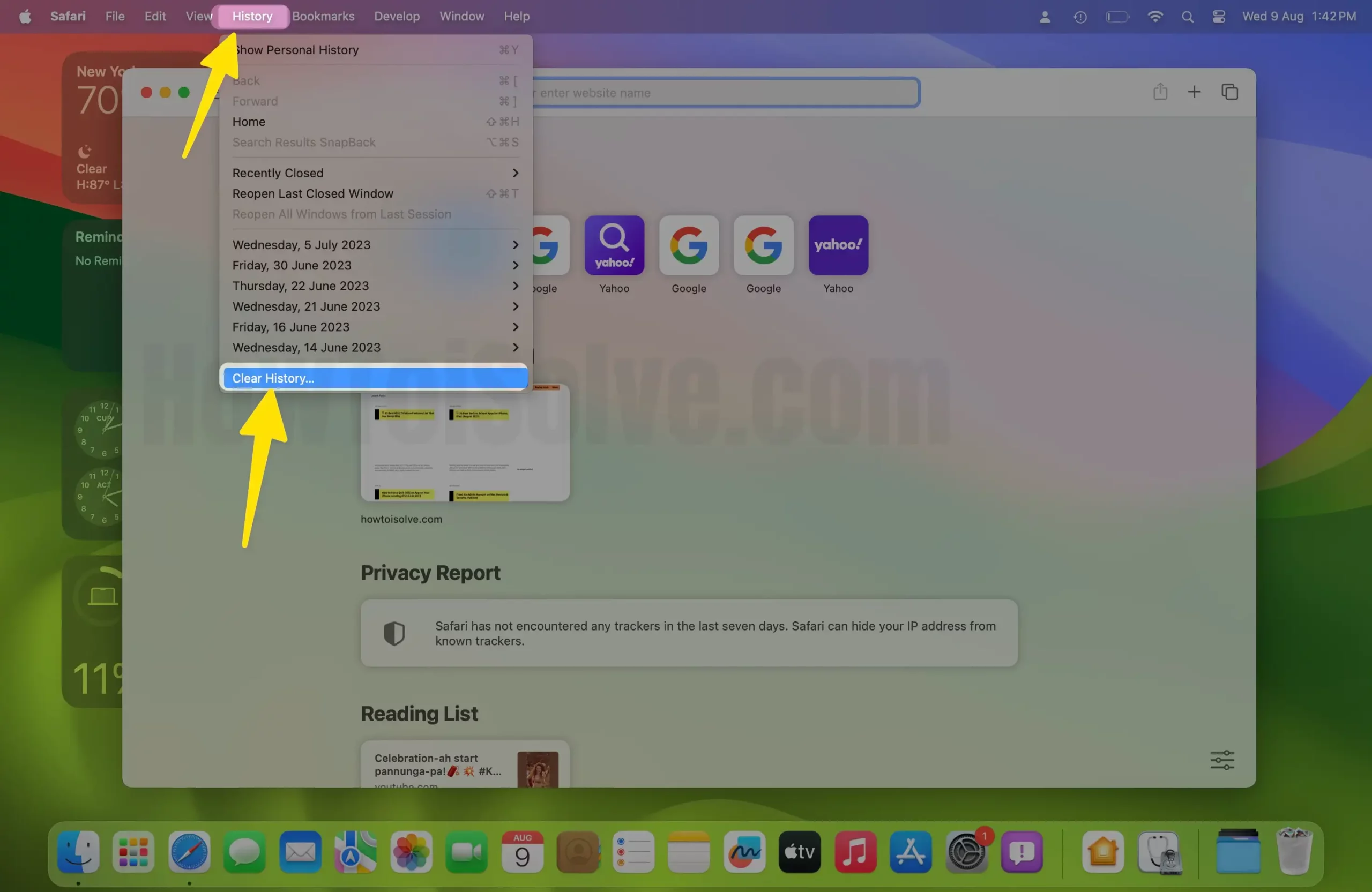
Step 3 : Choose the Clear History option from the drop-down menu that appears. Step 4 : Now select the time frame to clear, it is advisable to clear all history .
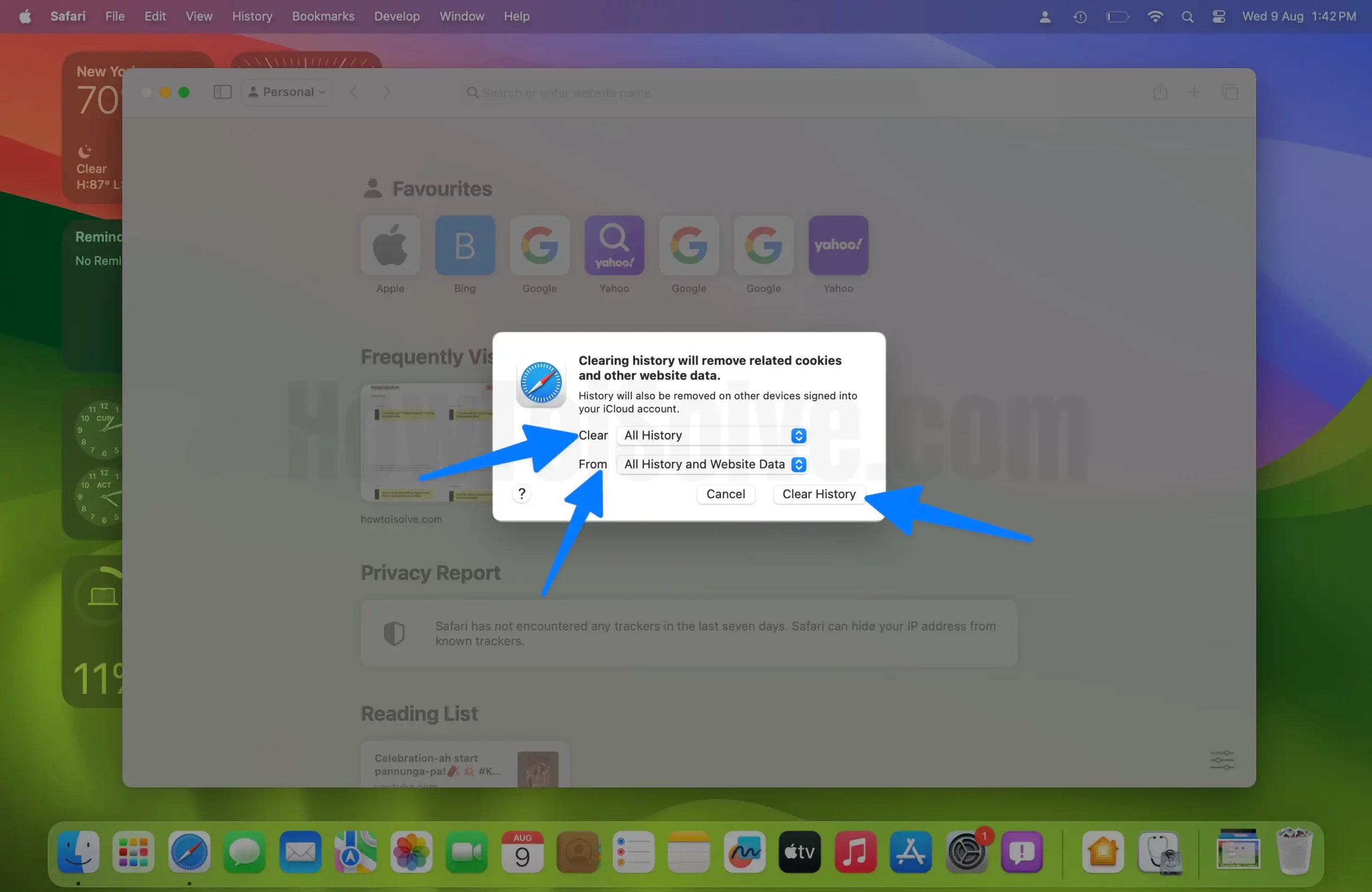
In Addition, we can clear the safari cache for specific profiles, Options showing ‘ From ‘. Select Profile and Clear Cache for Specific Profile.
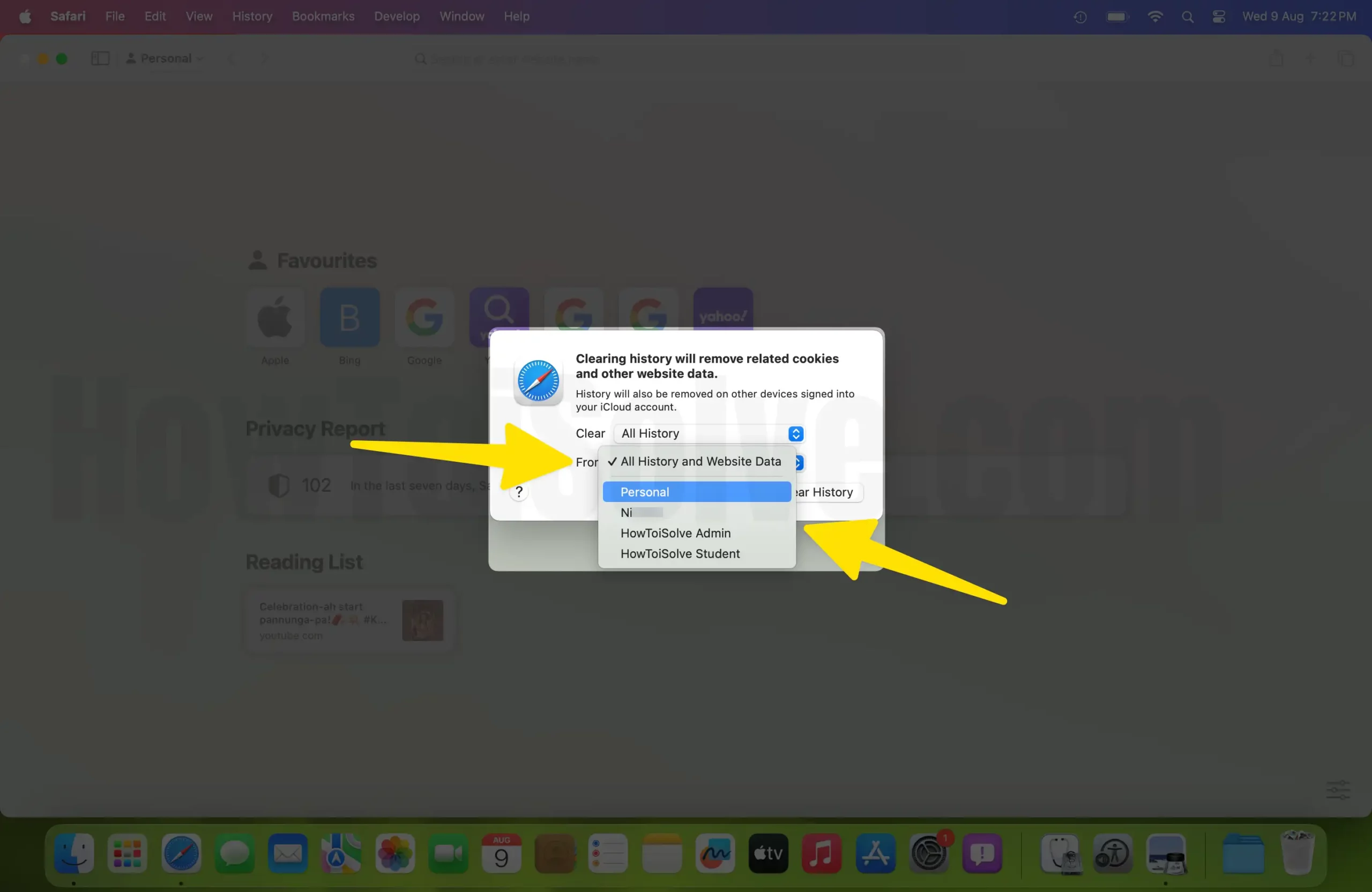
Step 5 : Finally, click on the Clear History button to initiate the process.
Note : If you happen to have enabled Safari in iCloud settings under the same Apple ID, a change in your browser history will be reflected across your other Apple devices using the same ID. Deleting Safari’s browsing history on one device will automatically clear the browsing history on the other Apple devices logged in under the same Apple ID.
Method 2: Configure Safari to Clear Browsing History Automatically
You could also set up the Safari browser in such a way that it automatically deletes your browsing history after a specified period. To do this:
Step 1: Open the Safari app on your Mac and then open Safari Settings/Preferences.

Step 2: Navigate to the General Settings tab on your Safari browser. Step 3: Select the Set up Remove history items option.

Step 4: Select your preferred clearing frequency for the automatic history removal. Step 5: Once set up, Safari will automatically be clearing your browsing history after the period you selected.
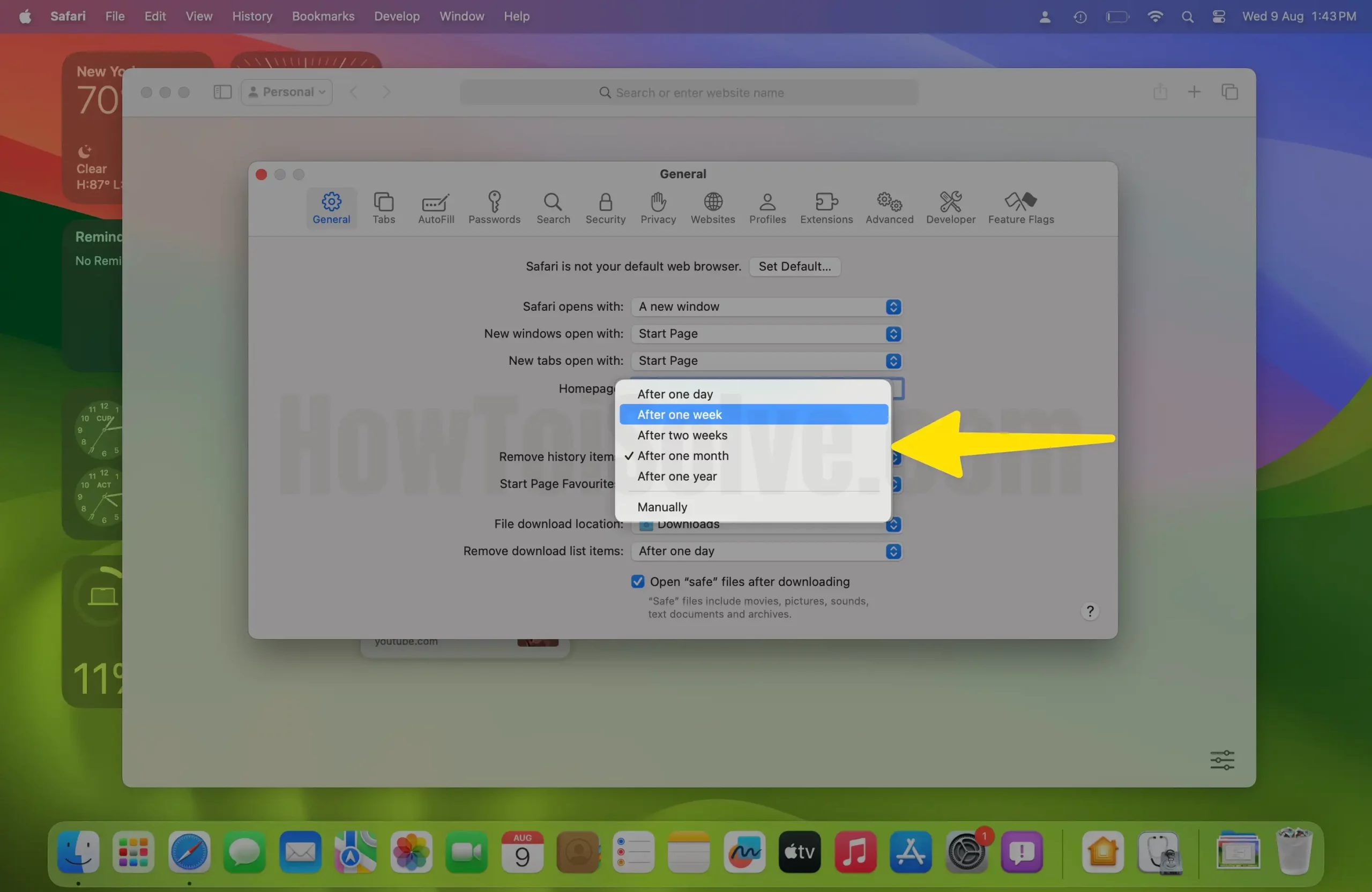
Reset Your Safari Website Data
Having cleared the cache and browsing history, now you should reset the website data to reset the Safari browser on Mac. To clear your Safari website data, you should:
Step 1: Launch the Safari browser on your Mac. Step 2: Click on Safari—towards the top-left corner of the Safari homepage. Step 3: Select the Settings/Preferences option and then navigate to the Privacy tab. Next, click on Manage Website Data
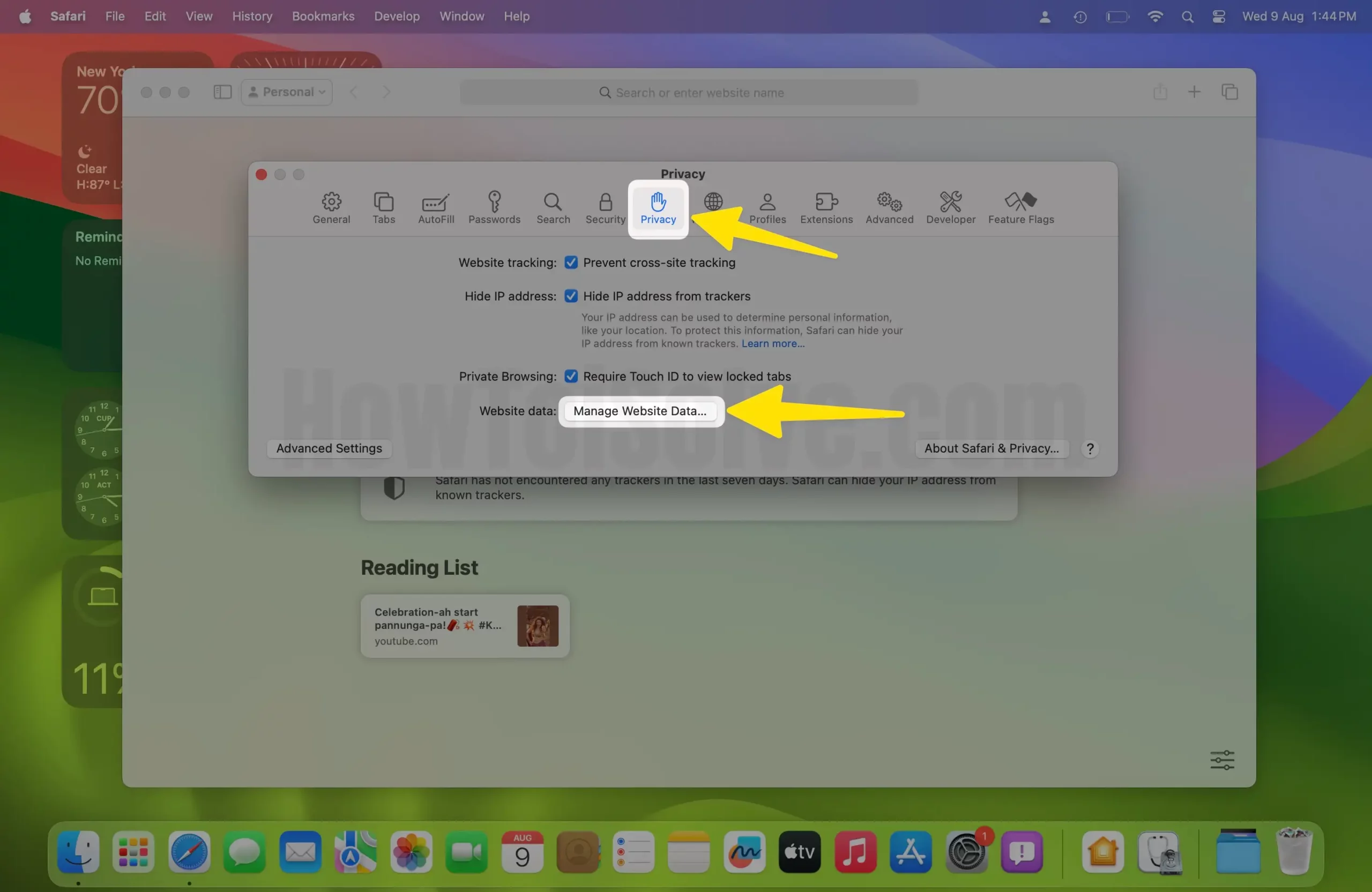
Step 4: before clicking Remove All —at the bottom-left corner.
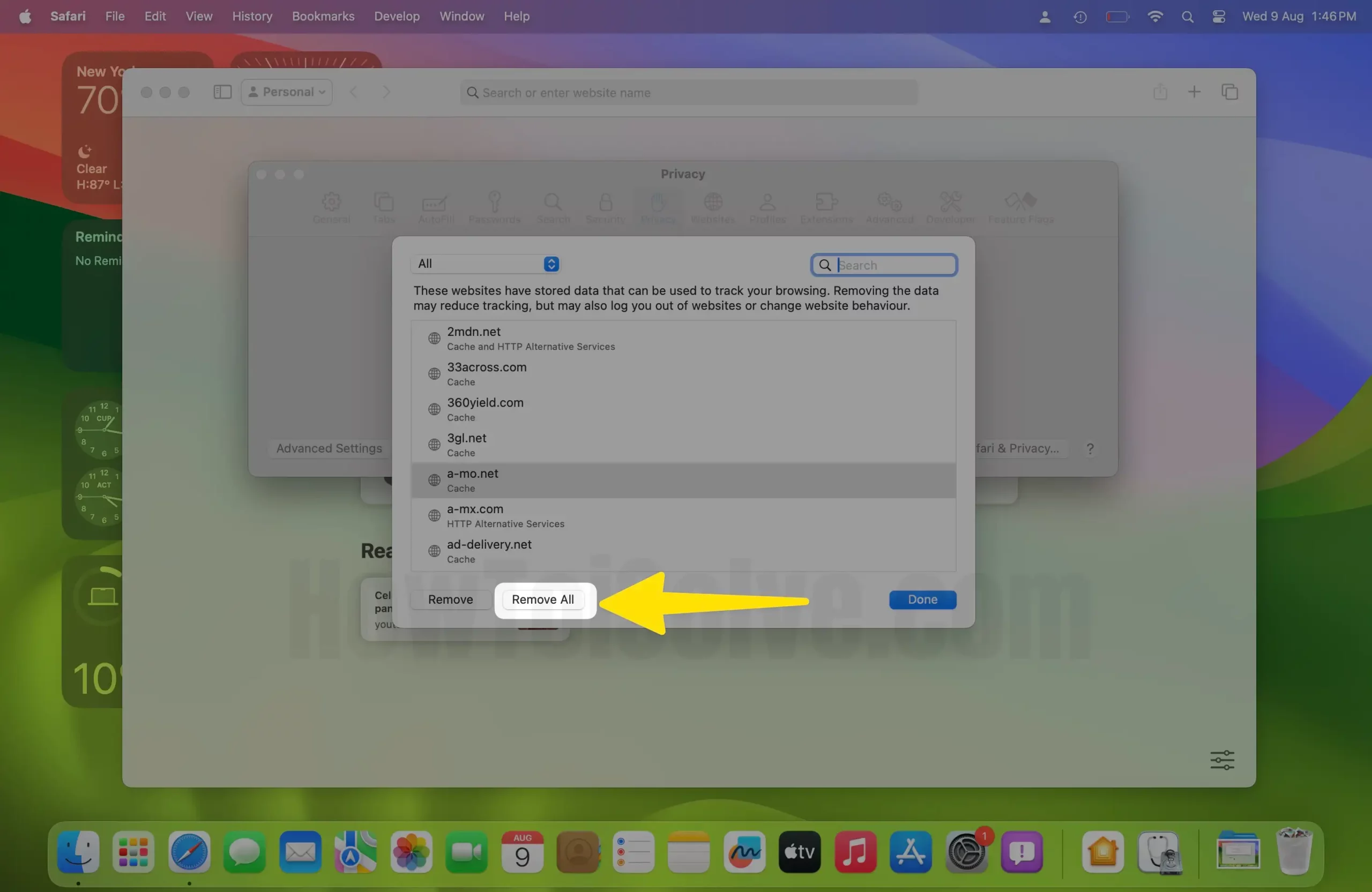
Step 5: Finally, click on the Remove Now button to confirm this operation.
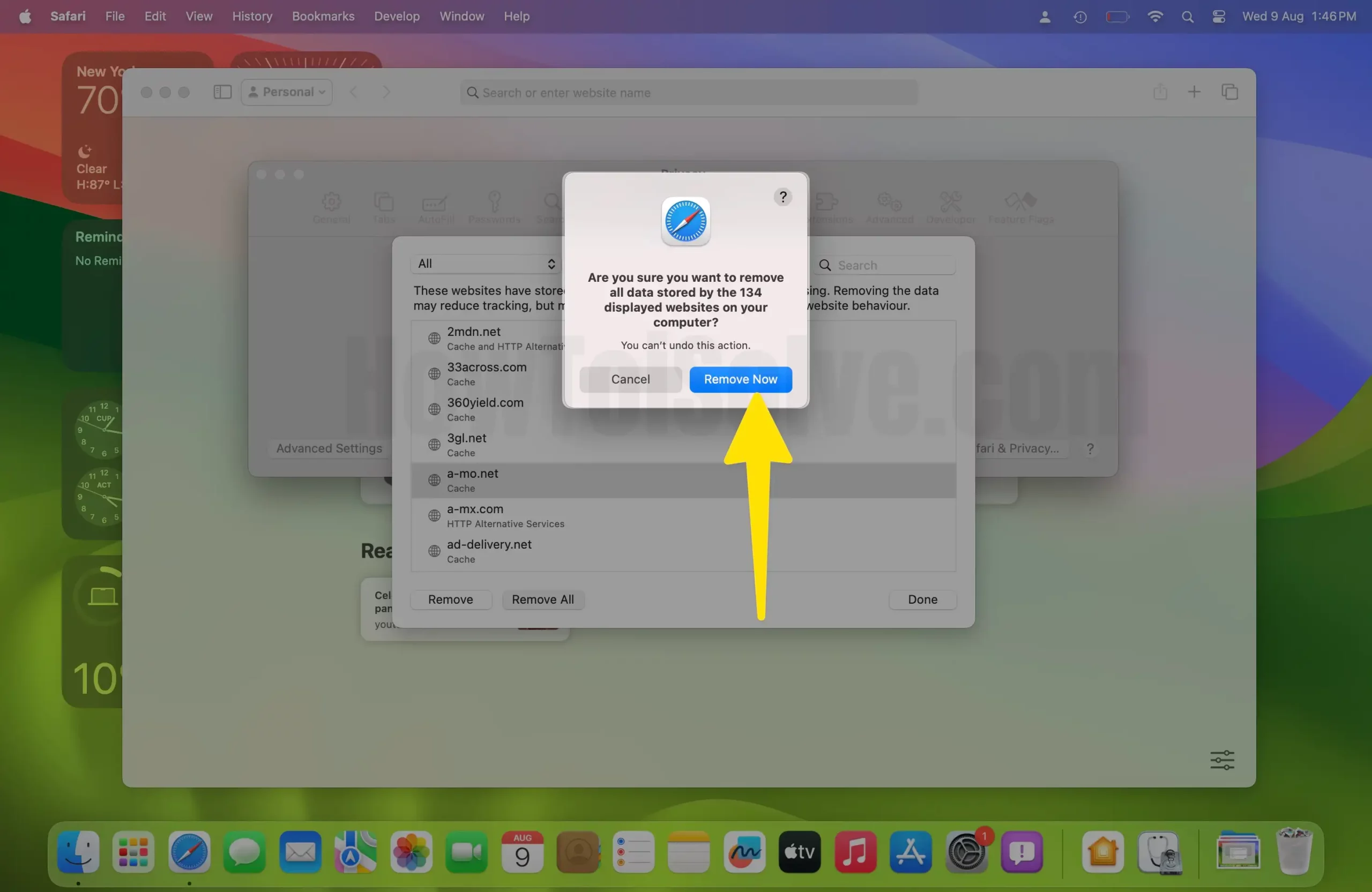
Reset, Uninstall, or Disable Safari Extensions and Plug-ins
Both extensions and plug-ins add to the functionality of the Safari browser. However, some may malfunction and affect the functioning of the browser. When that happens, you need to troubleshoot and uninstall or disable problematic extensions or plug-ins.
To fully reset Safari, you need to get rid of the extensions and plug-ins that have been added to the browser as well.
To Remove Extensions on Safari:
Launch the Safari browser then click on Safari —positioned on the top-left corner. Next, select the Settings/Preferences option then open the Extensions tab. This should display a list of extensions that are currently installed on Safari. Click on any one of them then click the Extensions button.
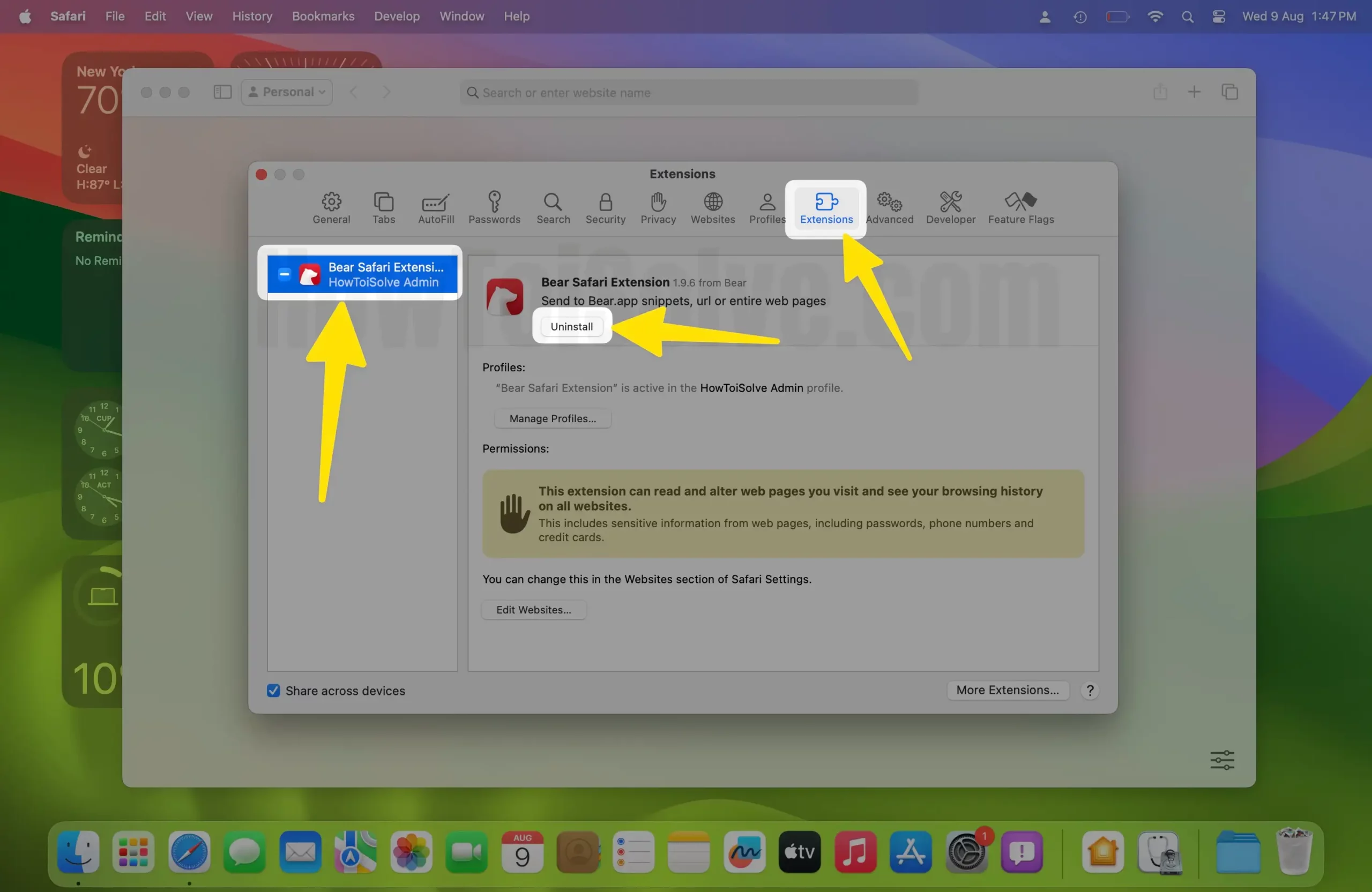
Follow on-screen prompts to uninstall the extension. Repeat this for each extension until you have uninstalled all the extensions on this list.
To Remove Safari Plug-Ins:
Launch the Safari browser, then click on Safari —on the top-left corner of the homepage. Select Preferences and then navigate to the Security tab. Click on the Allow Plug-ins option to untick it.
How Do You Reset Safari on Mac Terminal?
If you fancy running some commands in Terminal, you can use this method to reset the Safari browser to default settings on Mac. If you’d rather use Terminal to reset Safari on Mac, here is how you should go about it:
Step 1: Launch a new Terminal window on your Mac as follows: Applications > Utilities > Terminal Step 2: To avoid losing data, you could save your bookmarks before resting Safari. In this regard, you need to run the following command on the new Terminal window:
Step 3: You can now begin resetting Safari by force quitting the browser. To do this, run the following command on the Terminal:
Step 4: With this method, you also need to clear Safari cookies, Cache, and folders to reset the browser. You can do that by running the following commands, one after the other, on your Mac Terminal:
Press the Return key to run the command.
Hit the Return key to run it.
Press Return to run this command.
Step 5: Now that you’ve cleared your Safari cookies, cache, preferences, you can proceed to clear the more stubborn files. To accomplish this, run the following commands on your Mac Terminal, one after the other.
Note : Remember to press the Return key after entering each of the commands into Terminal and them wait for it to execute before running the next command.
These are the commands you should run to reset the Safari browser using Terminal:
Copy and paste each of the lines onto Terminal separately and run it before entering the next line.
Step 6: At this point, the browser should have been successfully reset to factory settings. Now you can restore the bookmarks you saved in step #2 above. However, this step is optional. If you’d like to restore your saved bookmarks, run the filling commands:
Press Return to execute this command. Once your Mac is done running this command, copy and paste the following onto your Mac Terminal:
You have successfully reset Safari on Mac Terminal. Launch the Safari app and start afresh as though it was newly installed onto your Mac.
Final Verdict
With time, the temporary files created by Safari may accumulate on your Mac or become corrupted. This may cause the browser to malfunction. For instance, it may cause the browser to become slow and sluggish, or even crash.
To fix such issues, you need to reset the browser to its default settings. Since Safari no longer has a built-in Reset button, you just have to do it manually. In this regard, you need to clear Safari preferences, extensions, plug-ins, cookies, and cache files separately.
This may sound painstakingly slow, but this guide includes the commands you can use to reset Safari on Mac Terminal.
Leave a Comment Cancel reply
Proven Tips: How to Reset Safari Browser on Mac
Quick Navigation
- Method 1: How to reset Safari on Mac without opening it [Fast & Safe]
Method 2: How to manually restore Safari to default settings
This post will show you how to reset Safari to default on Mac. The process can sometimes fix some errors (you may fail to launch the app, for example) when trying to use the Safari browser on your Mac. Please continue to read on this guide to learn how to reset Safari on Mac without opening it.
When Safari keeps crashing, won't open or doesn't work on your Mac, how do you fix Safari on Mac? You may reset Safari to default to fix the problems. However, as Apple has removed Reset Safari button from the browser since OS X Mountain Lion 10.8, one click to reset Safari is no longer available on OS X 10.9 Mavericks, 10.10 Yosemite and latest systems. To reset Safari browser on Mac, there are two methods you can use.
Method 1: How to reset Safari on Mac without opening it [Fast & Safe]
Generally, you have to open Safari browser to reset it back to default settings. However, when Safari keeps crashing or won't open, you may need to figure out a way to reset Safari on Mavericks, Yosemite, El Capitan, Sierra, High Sierra without opening the browser.
Instead of resetting Safari on the browser, you can reset Safari to factory settings with Macube Cleaner , a Mac cleaner to clear unwanted files on Mac, including Safari browsing data (caches, cookies, browsing history, autofill, preferences, etc.). Now, you can follow these steps to reset Safari on macOS Sierra:
Step 1: Download Macube Cleaner on your Mac. After installation, open the top Mac cleaner.
Free Download Free Download
Step 2: Choose System Junk and click Scan. When the scanning is done, choose App Cache > find Safari caches > click Clean to clear cache on Safari.
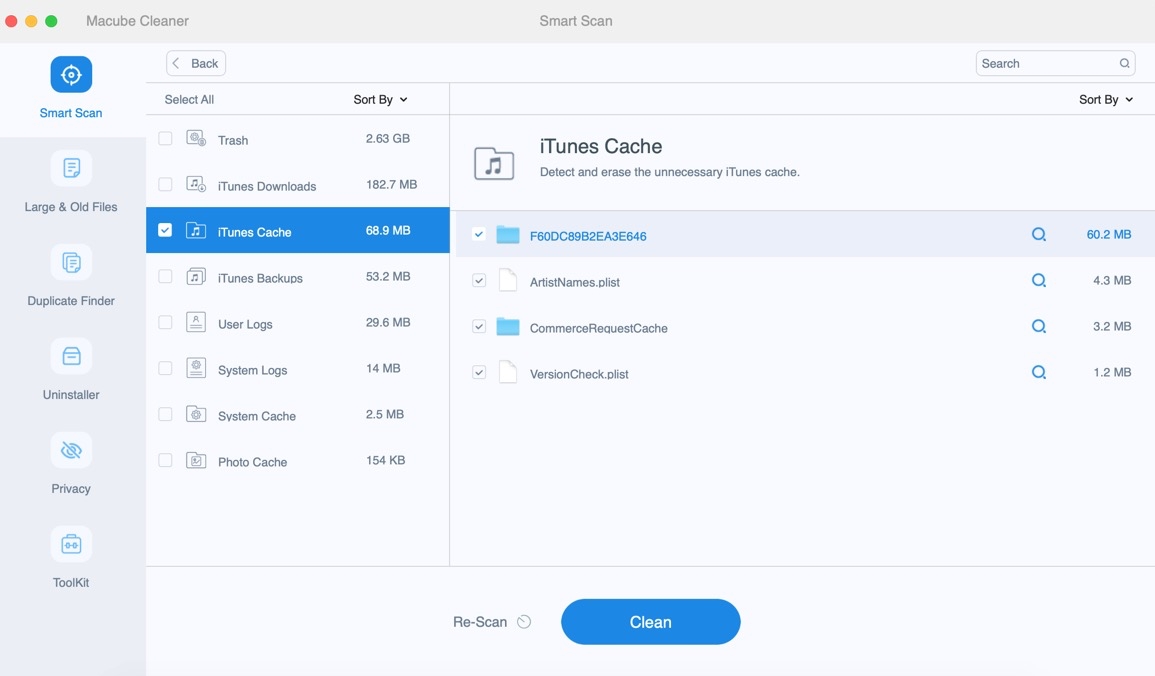
Step 3: Choose Privacy > Scan. From the scanning result, tick and choose Safari . Click Clean button to clean and remove all browser history all (browsing history, download history, download files, cookies and HTML5 Local Storage).
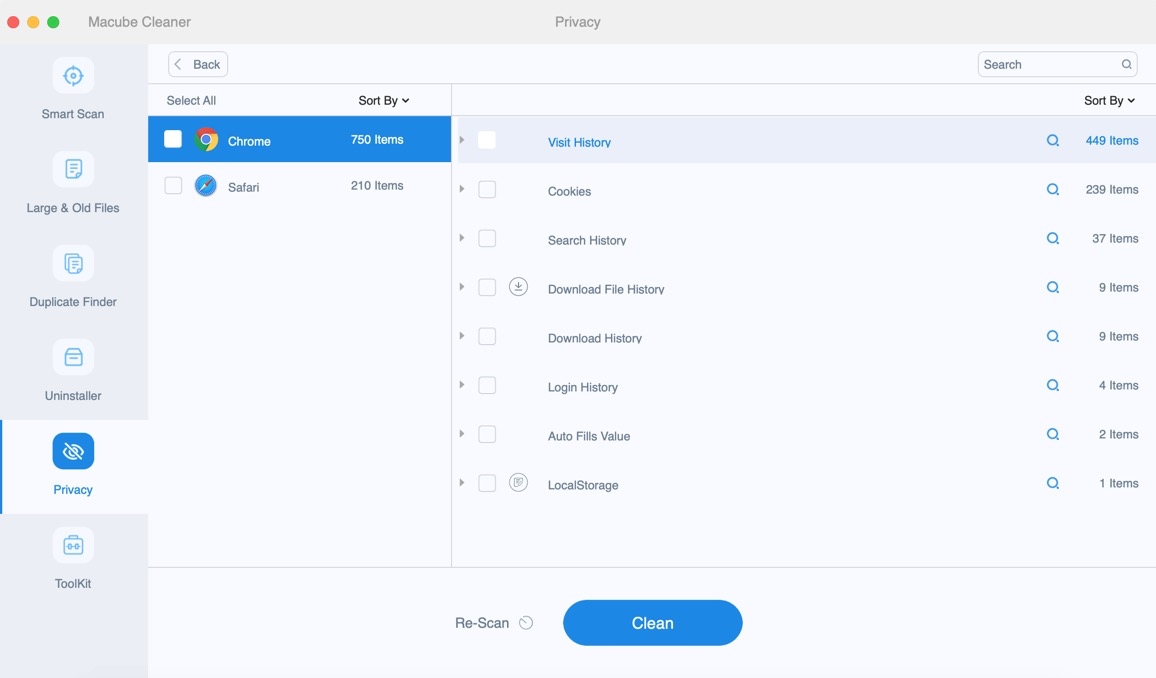
You have restored Safari to its default settings. Now you can open the browser and see if it is working right now. Also, you can use Macube Cleaner to clean up your Mac and free up space: remove duplicate files/image, clear system caches/logs, uninstall apps completely and more.

- You can also reset Safari on iMac, MacBook Air, MacBook Pro by using Terminal command. But you should not use Terminal unless you know what you are doing. Otherwise, you may mess up the macOS.
Although the Reset Safari button is gone, you can still reset Safari on Mac in the following steps.
A Manually reset Safari step-by-step [Security & Complexity]
Step 1: Clear history
Open Safari. Click History > Clear history > all history > Clear History.

Step 2: Clear cache on Safari browser
On Safari browser, navigate to the top left corner and click Safari > Preference > Advanced.
Tick Show Develop menu in menu bar. Click Develop > Empty Caches.
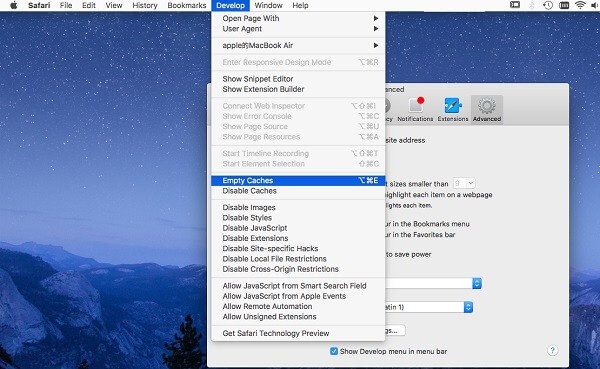
Step 3: Remove stored cookies and other website data
Click Safari > Preference > Privacy > Remove All Website Data.
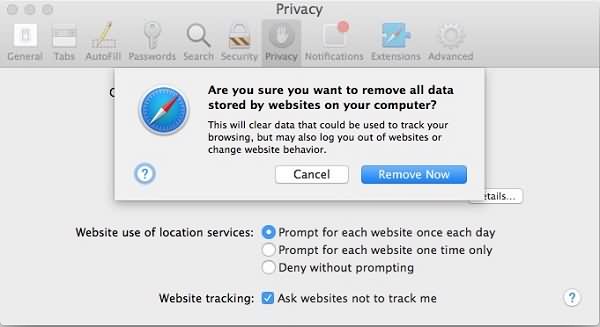
Step 4: Delete Extension & plug-ins
A Safari plug-in or extension is a small software program that enhances the functionality of the Safari web browser. It allows users to customize their browsing experience by adding new features or modifying existing ones. Let’s take a look at how to delete it.
1. Choose Safari > Preferences > Extensions.
2. In the pop-up window, you will see a list of installed extensions. To completely reset Safari, select each extension and click Uninstall.
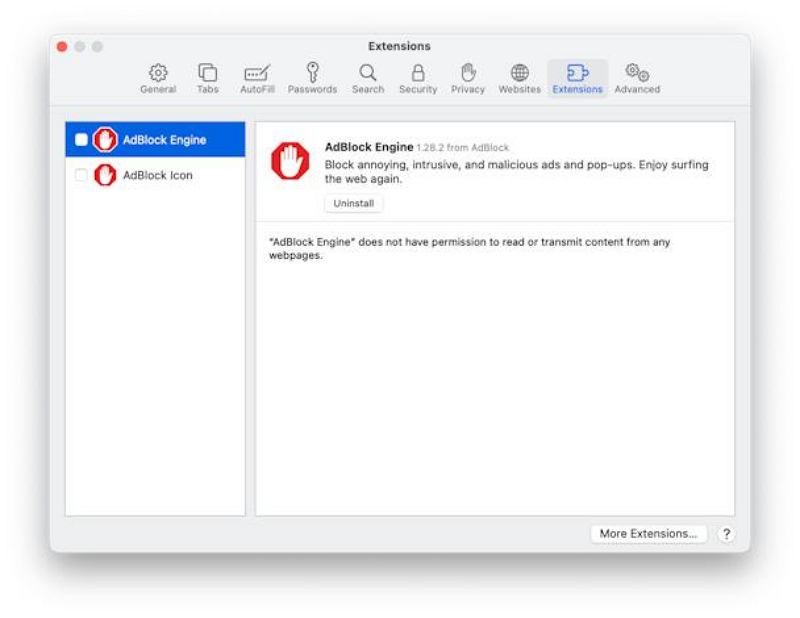
Then, you need to manually delete Safari plug-ins from the Library folder. Don't worry, the following method is not a complete removal of the plugin, and you can still easily restore it when you still want to download it.
- If you can't see it, try holding down the Option key as you click; or in the Go menu, select Go to Folder and enter ~/Library
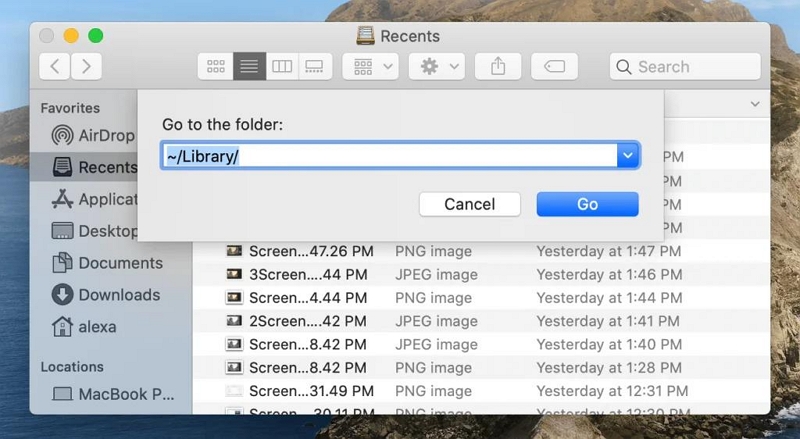
2. Click the Internet Plug-ins folder and drag the plug-ins you want to delete to the Trash.
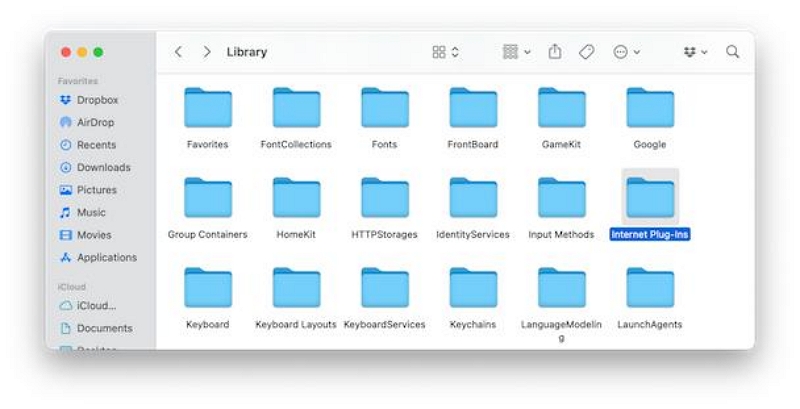
3. Open Finder > Go > Computer again.
4. Click the name of your Mac and select the Library folder or click the Go > Go to Folder, and then type /Library.
5. Click the Internet Plug-ins folder and drag the plug-ins you want to delete to the Trash.
Step 5: Delete Preferences on Safari
Click Go tab and hold down Option, click Library. Find the Preference folder and delete files named with com.apple.Safari.
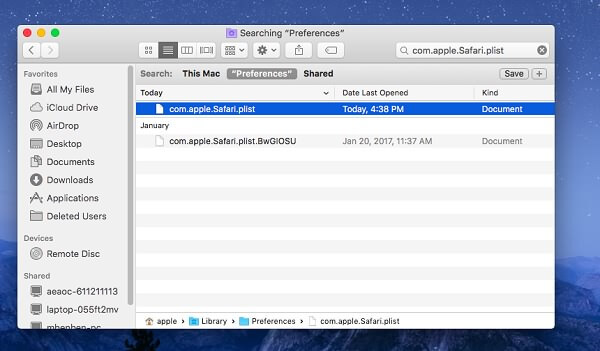
Step 6: Clear Safari window state
In the Library, locate Saved Application State folder and delete files in com.apple.Safari.savedState folder.
- Safari on your iMac, MacBook should start working after the reset. If not, you may reinstall Safari by updating macOS to the latest version.
B Reset Safari on Mac using Terminal [Fast & Risky]
If you use Terminal frequently and are a professional computer user, you can run several Terminal commands to reset Safari. Please be careful, as incorrect terminal commands may cause the system to crash.
Go to Applications > Utilities > Terminal > Paste the following commands. Execute the following commands sequentially in the Terminal, typing each line separately. Once you run a command, the Terminal will request confirmation to delete the specified files. Press “y” to confirm and then press Enter. mv ~/Library/Safari ~/Desktop/Safari-`date +%Y%m%d%H%M%S` rm -Rf ~/Library/Caches/Apple\ -\ Safari\ -\ Safari\ Extensions\ Gallery rm -Rf ~/Library/Caches/Metadata/Safari rm -Rf ~/Library/Caches/com.apple.Safari rm -Rf ~/Library/Caches/com.apple.WebKit.PluginProcess rm -Rf ~/Library/Cookies/Cookies.binarycookies rm -Rf ~/Library/Preferences/Apple\ -\ Safari\ -\ Safari\ Extensions\ Gallery rm -Rf ~/Library/Preferences/com.apple.Safari.LSSharedFileList.plist rm -Rf ~/Library/Preferences/com.apple.Safari.RSS.plist rm -Rf ~/Library/Preferences/com.apple.Safari.plist rm -Rf ~/Library/Preferences/com.apple.WebFoundation.plist rm -Rf ~/Library/Preferences/com.apple.WebKit.PluginHost.plist rm -Rf ~/Library/Preferences/com.apple.WebKit.PluginProcess.plist rm -Rf ~/Library/PubSub/Database rm -Rf ~/Library/Saved\ Application\ State/com.apple.Safari.savedState
Using the terminal to reset Safari is fast, but it may cause risks. Therefore, this article recommends using the zero-risk and efficient Macube Cleaner to reset Safari to meet your needs.
Part 3:FAQs
Q1: can i restore my bookmarks after resetting safari.
Certainly! You can recover your bookmarks after resetting Safari on your Mac by following these steps:
- Open Safari on your Mac.
- Click on the “File” menu located in the top-left corner of the screen.
- Select “Import From” and then choose “Bookmarks HTML File”.
- Navigate to the location where you previously saved your bookmarks before resetting Safari.
- Select the HTML file containing your bookmarks.
- Click on the “Import” button, and your bookmarks should be restored.
Alternatively, if you have enabled iCloud syncing for your Safari bookmarks, you can also restore them by enabling the “Safari” option in iCloud settings on your Mac. This will sync your bookmarks from iCloud to your Safari browser.
Q2: How do I fix Safari problems on iPhone and iPad?
- Refresh the page.
- Install software updates and restart your device.
- Review Safari extensions.
- Try opening a private browsing window.
- Verify Safari settings.
- Verify iCloud Private Relay settings.
- Confirm if any VPN or security software is affecting the connection.
- Verify network settings.
I hope you have learned something about resetting Safari in this note. In order to prevent you from encountering problems that affect the use of Safari again, please remember to clean your computer regularly. Macube Cleaner can help you quickly clean software and Mac storage space. If you have more questions about Safari, you are welcome to browse other articles on our website. I believe we can answer your confusion.
Hot Articles
- How to Enable/Disable/Clear Cookies in Safari/Chrome/Firefox on Mac
- 8 Reliable Fixes-How To Quit Safari On Mac When It’s Unresponsive!
- How To Delete Recently Closed Tabs On Browsers Chrome/Safari/Firefox [Step by Step]
- How To Turn Off Private Browsing History On Mac [Safari/FireFox/Chrome]: Step-by-step!
Macube Cleaner
Speed up and troubleshoot your Mac super easily with a Macube full-featured free trial!
Macube Cleaner is downloading now...
Install -- Scan your Mac -- Clean it up
How to reset Safari settings on Mac
In this article, we will tell you how to clear caches, history, extensions, and plugins for resetting the Safari browser on a Mac.
- How to clear browser cache
- How to clear Safari history on a Mac
- How to remove Safari extensions
How to remove Safari plugins
How to change homepage on safari, what is safari.
Safari is the most popular web browser for Macs. Over time, however, the app may start running slower. Usually, that happens because of too many temporary and junk files that the browser has created. This problem can be resolved by resetting the browser, which makes it run faster.To reset Safari on a Mac, you will need to take a few steps to remove all its temporary components and installed plugins. So, keep in mind that the auto-fill data of your Safari browser, such as saved usernames or passwords, will also be deleted.
Please note that if you enabled Safari in iCloud settings with the same Apple ID, any changes will be reflected on other Apple devices using that login. When you delete browsing history from one Apple device, it will be automatically deleted from your other Apple devices.
How to Clear Safari Browser Cache
Every time you open a web page, Safari saves its media files as caches and stores them in a temporary folder in the Library folder. This helps Safari to retrieve websites from the cache faster than it receives from the Internet. On the other hand, over time these files occupy significant disk space. That’s why we recommend periodically clearing cache in Safari. Web cache clearing can save gigabytes of space on your Mac.
Clear Safari cache via its Preferences
- Launch the Safari browser.
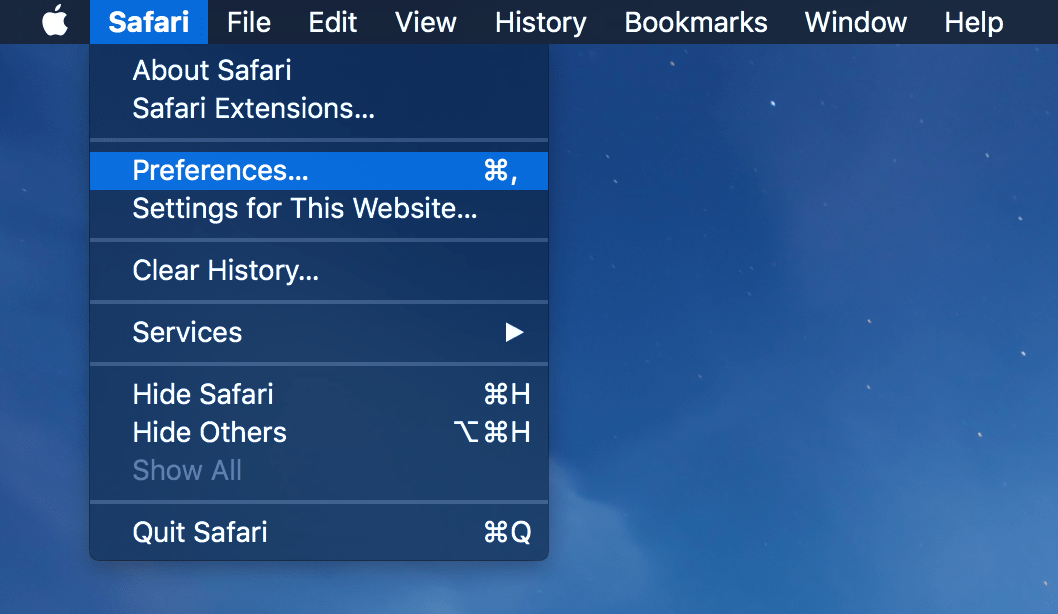
- You will get access to the Develop menu command.
- Use the Develop → Empty Caches menu command to clear the cache.
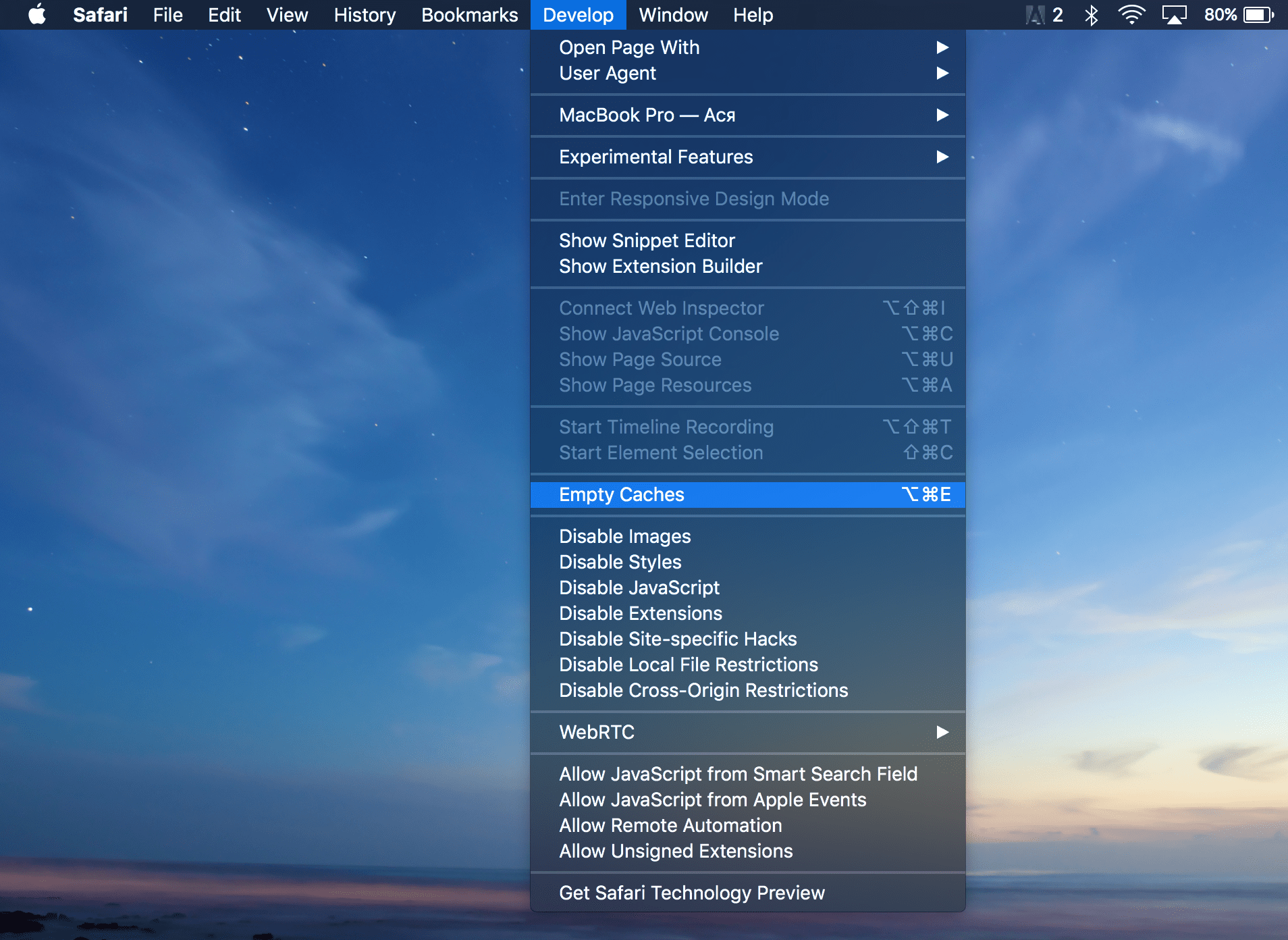
That’s all. In a few seconds, the Safari clean-up process will be completed. Once you enable the developer menu, you can easily access this option whenever you need.
The easiest way to clear Safari cache
IThe easiest way to clear browser caches is to use a special utility tool. You can use MacCleaner Pro to clear the cache and reset Safari.
- Launch MacCleaner Pro.
- Select the browser’s cache.
- Click to remove cache files.
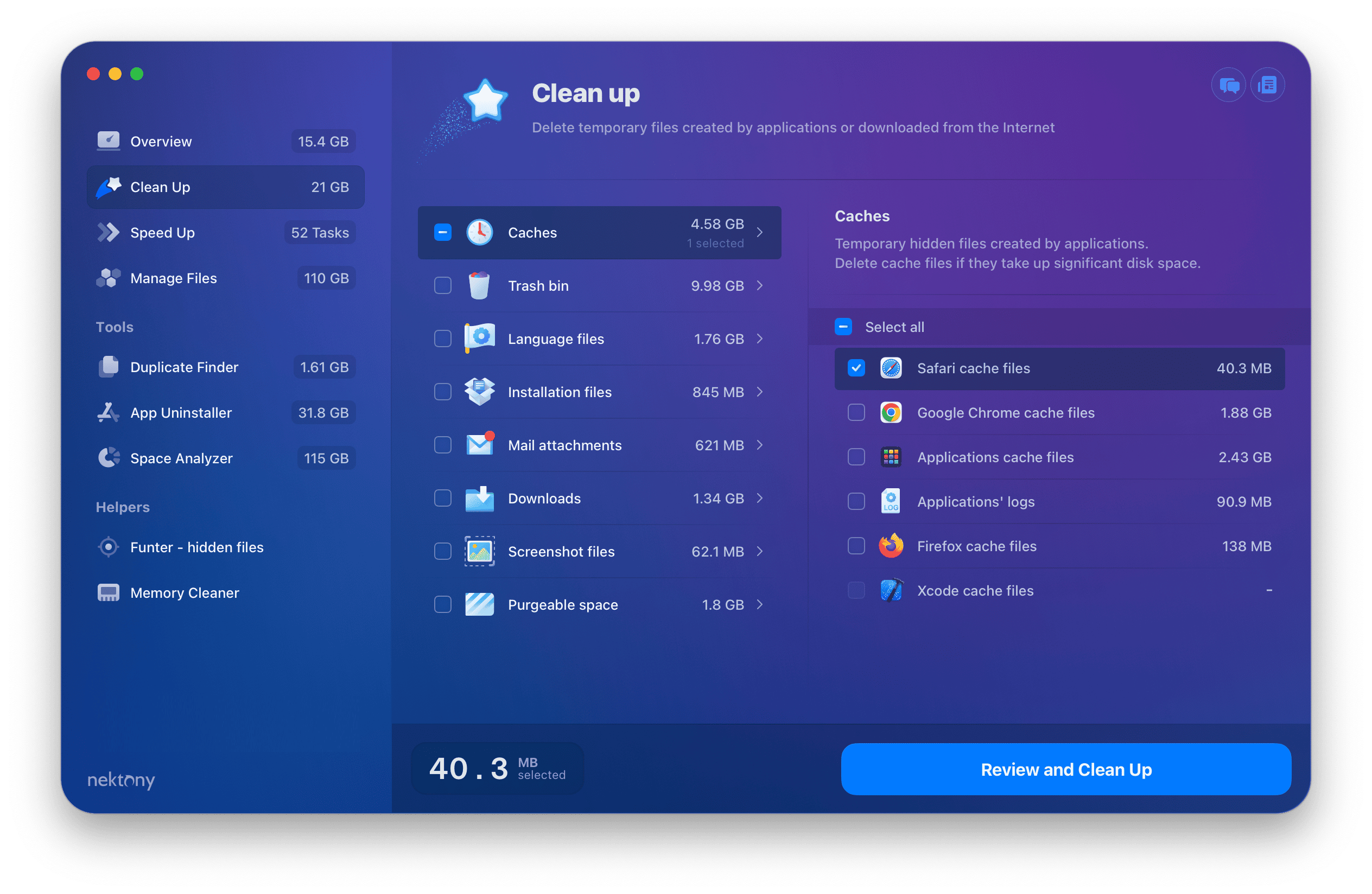
MacCleaner Pro also allows you to remove other junk files, such as logs, downloads, files in the Trash folder,language resources and more. MacCleaner Pro provides a trial version so that you can try it absolutely free.
Clear Safari History
All web browsers, including Safari, keep a history of the pages you have visited. If you want to maintain privacy and clear the list of websites you’ve recently viewed, follow this guide to clear Safari history.
How to delete Safari history
- Launch the Safari browser
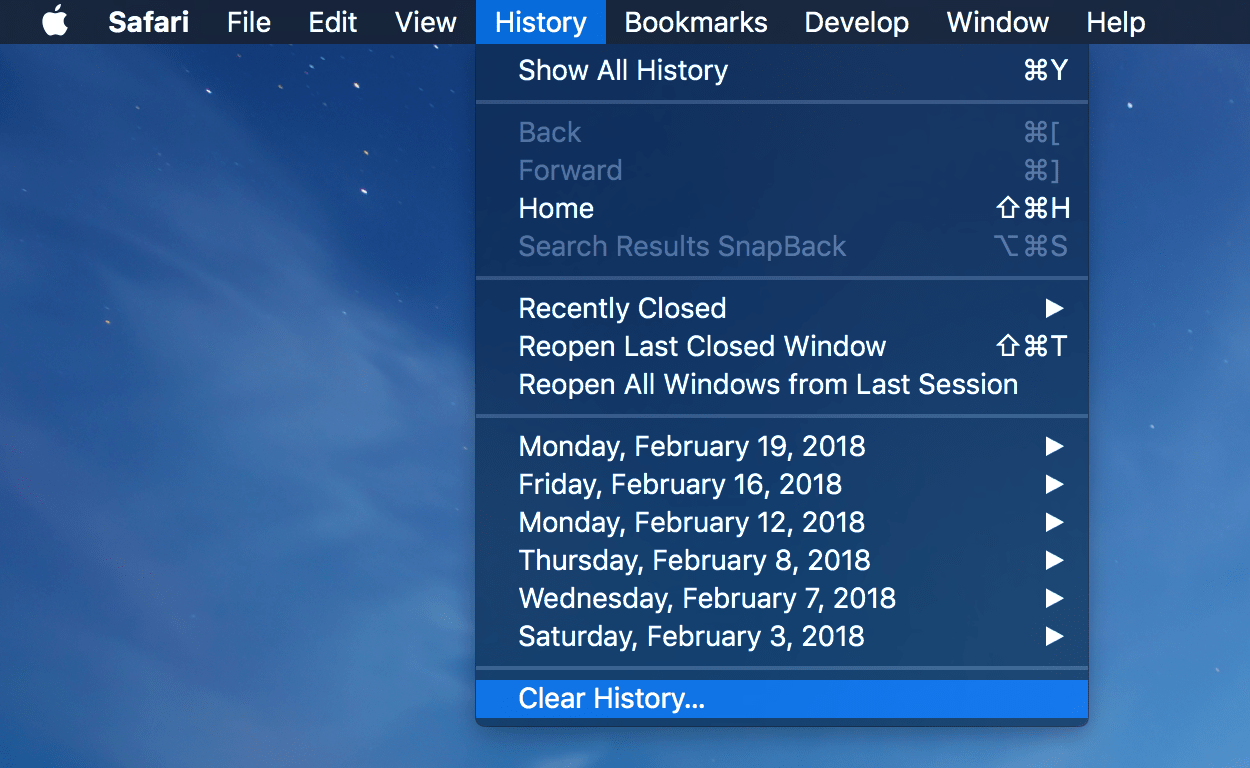
- Choose the time increment to clear
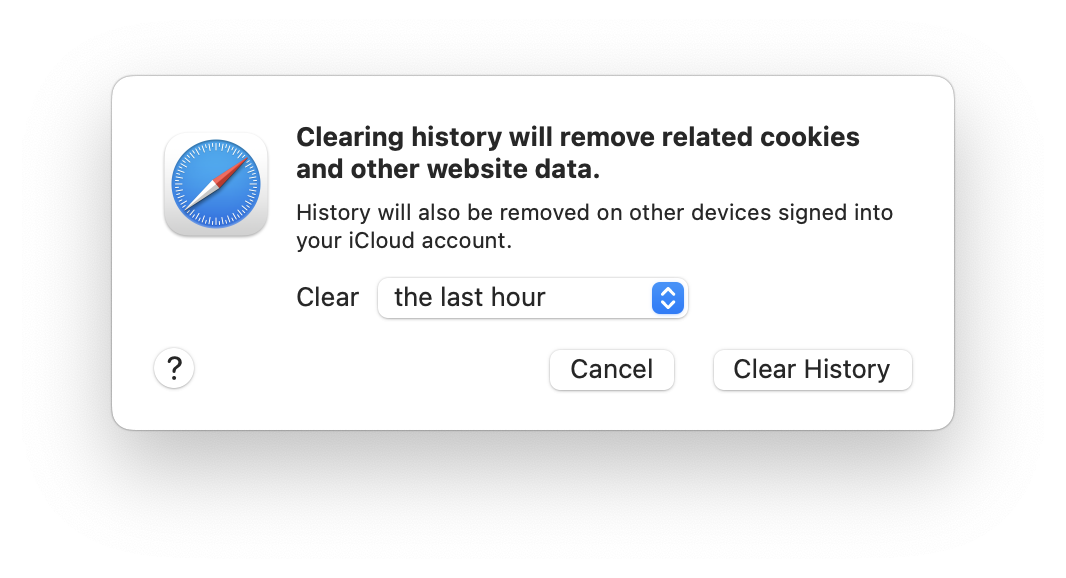
That’s all! Safari history has been cleared from your Mac.
How to remove Safari browser history automatically
If you want the history to be deleted automatically, follow the next steps.
- Open Safari Preferences
- Switch to the General Safari settings tab
- Set up Remove history items
- Choose the frequency for automatic history removal.
After this, Safari will delete your browser history automatically.
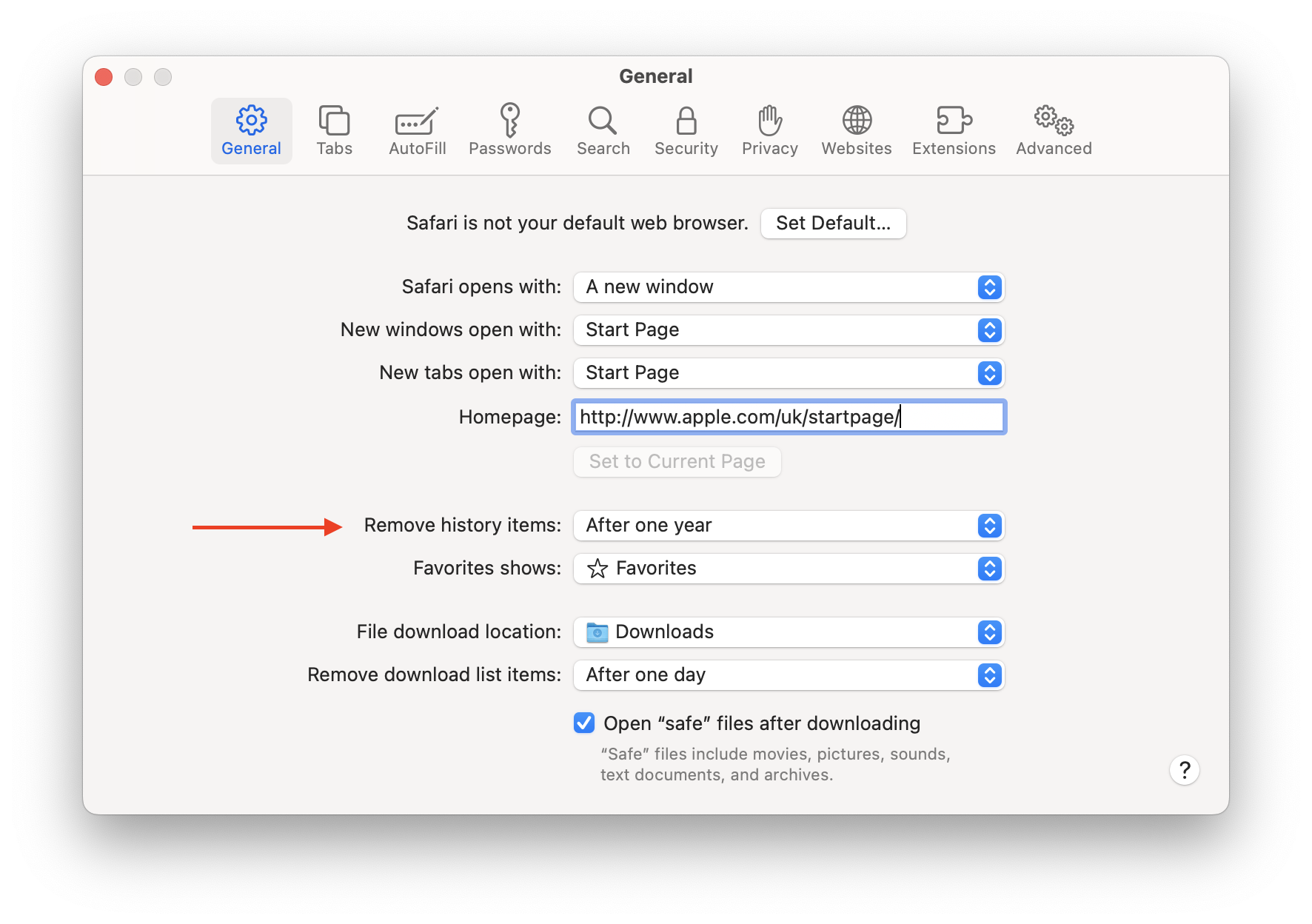
Remove Safari Extensions
Extensions and plugins are small software components that also affect your web browser’s performance. If you want to entirely reset Safari, delete these as well.
How to remove Safari Extensions
- Open Safari Preferences .
- Select the Safari Extensions section.
- Choose the extension you want to remove and click Uninstall .
- Repeat the Uninstall step with all unneeded extensions.
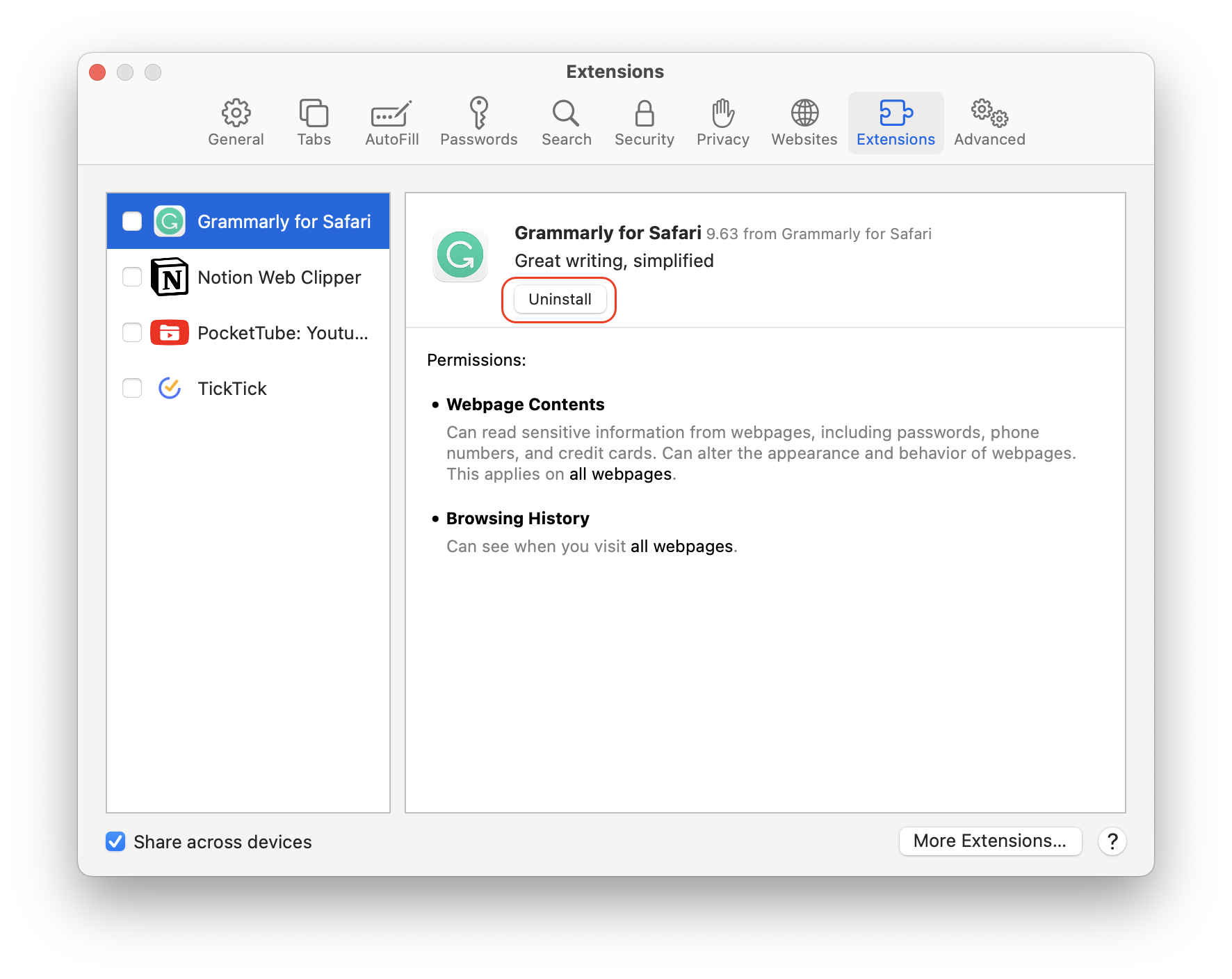
2022 Guide: How to Reset Safari on Mac (Catalina Supported)
- How to Unblock Pop-ups on Mac
- 4 Easy Ways to Delete Backups on Mac [2022 Solved]
- Umate Mac Cleaner Review - How Good is this Mac Cleaning App
- How to Factory Reset Mac - Step by Step Process to Reset Mac
- How to Uninstall Razer Synapse on Mac?
Safari is the default browser of macOS, which is vital access for Mac users to search the Web. However, once Safari went something wrong, it would be a great headache. Does your Safari often crash down, or cost a long time loading and run much slower than before? If you're encountering one or all of them, this post could help you a lot to solve these problems. Actually, it's a normal phenomenon after the bowser has worked for a long period of time, and these problems can be easily settled by resetting Safari. If you want to know how to reset Safari, just follow the guide below.
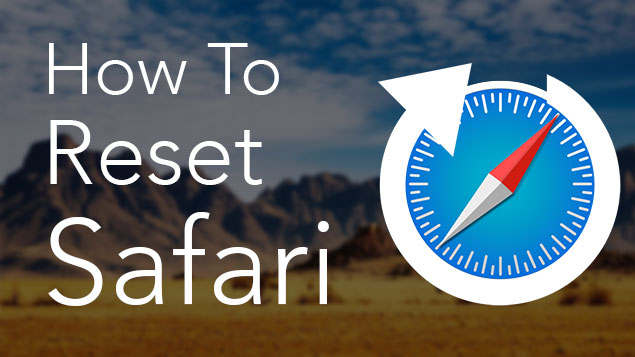
What Happens If I Reset Safari?
So what will happen if resetting Safari? Does resetting Safari clear everything? Does it delete passwords or remove bookmarks? Will it clear Safari histories thoroughly? Before resetting Safari on Mac, it's necessary to know what will be deleted. We must be clear about the things will be removed by resetting Safari to factory defaults, so we can make sure that when we clean up Safari we won't erase the data we still need. Once Safari is reset, a varity of data will be removed, including:
- All advanced settings will revert to their default configuration.
- The auto-filled user names and passwords will be cleared.
- All cached files will be deleted.
- All the bookmarks will be removexd from Safari.
- Homepage button will be hidden and the URL that you previously set will be erased.
- Default startup tabs will be cleared.
- New Tab page settings will be reset.
- Content settings will be cleaned up and reset to their installation defaults.
- Cookies and site data will be deleted.
- Extensions, themes and plugins will be disabled.
How to Reset Safari on Mac
In the past, macOS supported the one-click function to "Reset Safari". But for the latest Safari Versions 9 - 13, the one-click button has been removed. So if you want to reset Safari, there are several steps you need to follow to complete the resetting. It's worth mentioning that if you find it time-consuming to delete the data one by one or you are afraid that there is a possibility of deleting wrong files to cause system corruption, you can just turn to 5. Fullly Reset Safari on Mac Without Opening It easily and safely.
1. Clear Safari History on Mac
- 2. Clear Safari cache
3. Remove Safari Extensions
4. switch off or delete plug-ins.

From the "History" option, go to "Clear History and Website Data", click on "Clear History" from the drop-down menu and then select all the items and press "Delete".
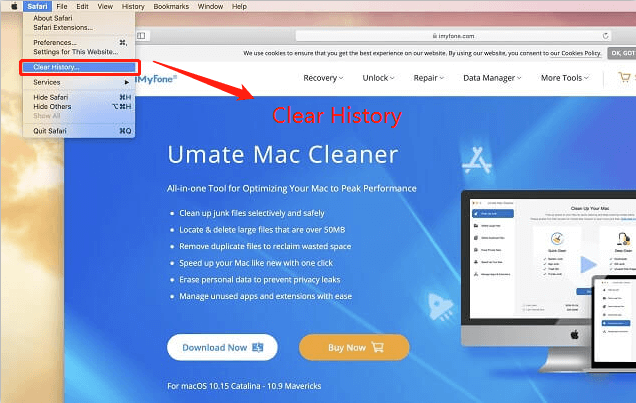
2. Clear Safari Cache
Go to "Safari", click on "Preferences". From the "Advanced" option, click on the box in front of "Show Develop menu in menu bar" to enable it.
From the drop-down menu of the "Develop" option, click on "Empty Caches".
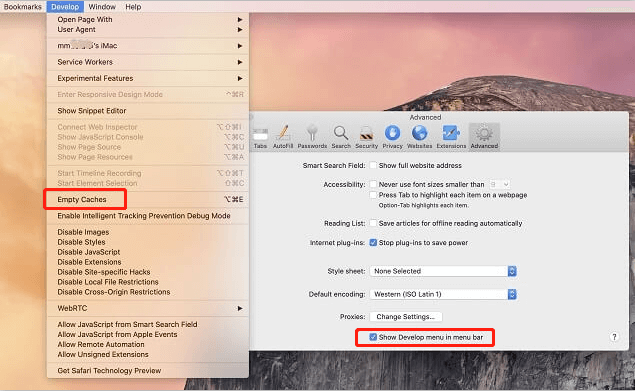
From "Safari", go to "Preferences" and then select each extension and click on "Uninstall" to remove or disable it.
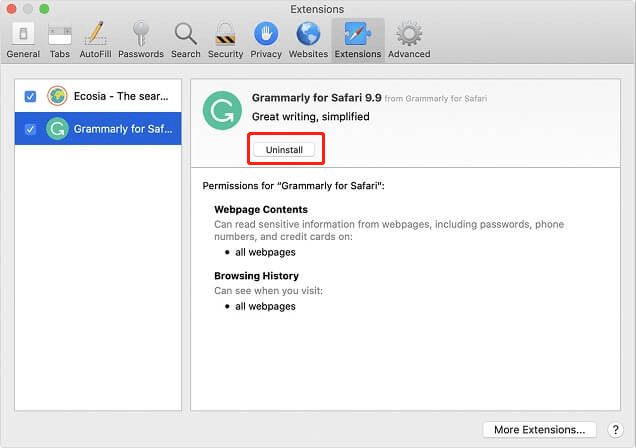
From "Safari", go to "Preferences", click on "Websites" and deselect all the listed plug-ins from the bottom part of the window. If you want to delete the plug-ins, press and hold Cmd-A to select all the listed plug-ins and then press and hold Delete to delete all of them at once.
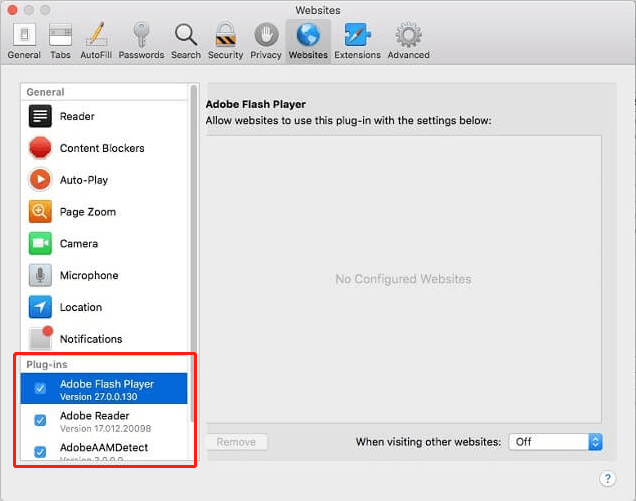
5. Fullly Reset Safari on Mac Without Opening It
Instead of manually deleting the above data one by one on the Safari browser, you can use a better solution for the same, which can help you easily reset Safari without opening it. All these data can be reset through iMyFone Umate Mac Cleaner .
It is an all-in-one Mac management tool which is specifically designed to remove unwanted files and data from your system and improve its performance drastically.
Advantages of using iMyFone Umate Mac Cleaner
- One-click to mass remove the extensions, browsing data, caches and other things which are needed to reset Safari browser on Mac.
- Not only can the auto-filled accounts and passwords be cleared from Mac Safari , but also all the private data on Mac can be removed with Umate Mac Cleaner.
- The scanning and deleting speed is super fast .
- A 100% reliable and effective solution - It will not cause any harm to the system's running.
How to use iMyFone Umate Mac Cleaner to Reset Safari
You can follow the steps below to know how to reset Safari by using this tool.
1. First, you should download and install the App properly.

2. After installing the program, go to "Erase Private Data", then click on "Scan" and select the "Online Traces" tab from the results. Here displayed all data from "Safari" and you can click on "Erase" after you make selections. All the data kept in Safari will be deleted.

3. As for the Safari extensions management, you can go to "Manage App & Extensions" and click on "View Items" which is below "Remove Extensions", then click on "Safari Extensions" and remove the selected data by clicking on "Remove".

With the help of this tool, it would be much easier to reset Safari. All can be done with just a few clicks instead of reseting data one by one and deleting them manually.
You may have to reset your Safari due to some improper performance issues in your Mac system. The above methods can greatly help you reset Safari settings easily.
Instead of resetting the data on Safari one by one, you can use iMyFone Umate Mac Cleaner to reset Safari at once. This is an excellent tool contained with all the functionalities that are designed to improve your Mac's performance.
(Click to rate this post)
Generally rated 4.8 ( 256 participated)
Rated successfully!
You have already rated this article, please do not repeat scoring!
You Might Also Like
- [Free Guide] Use Tiktok on PC or Mac
- [GUIDE]Why Does My Mac Die So Fast
- Why is My Mac Overheating? 8 Ways to Stop Mac from Overheating
- 10 Free Ways to Solve "Startup Disk Full on Mac" Problem
- 12 Free Ways To Speed Up Your Mac
- How to Delete LastPass Account on Mac?
- 3 Ways to Remove Boot Camp from Mac
- How to Remove Bootcamp from Mac
- The Best 6 Ways to Compress Images on Mac
- How to Get Rid of Search Marquis on Mac: All Methods
- Easy Way to Uninstall Citrix Receiver on Mac for Free
- [Full Guide]Erase Macbook in Minutes
Product-related questions? Contact Our Support Team to Get Quick Solution >
More Resources
- Unlock iPhone
- Transfer WhatsApp
- iPhone Issues
- iOS Data Recovery
- Clean up Mac
- Change Location
Home > Clean up Mac > 2022 Guide: How to Reset Safari on Mac (Catalina Supported)
Stack Exchange Network
Stack Exchange network consists of 183 Q&A communities including Stack Overflow , the largest, most trusted online community for developers to learn, share their knowledge, and build their careers.
Q&A for work
Connect and share knowledge within a single location that is structured and easy to search.
How to change proxy setting using Command line in Mac OS?
I am using Mac OS and sometimes some work need to be done using a proxy so I need to change my proxy setting frequently. But changing proxy setting in System Preferences is very messy.
Is there a way that I can change my proxy setting using command line? Use a shell command or some tools?
4 Answers 4
EDIT: I am assuming you actually means Mac OS X, and not Mac OS..
You can use the commandline tool 'networksetup'
There is a manpage for it - networksetup(8)
You will find many options for proxy settings in there:
Alternatively, if you just need to set the proxy for something like wget, or curl, then you can use the fairly universal 'http_proxy' and 'ftp_proxy' env variables.
Eg in bash:
Where '1234' is the port number.
- 1 Is there a way to set the Automatic Proxy Configuration I didn't see it in the options – Jeef Sep 23, 2015 at 23:48
- @Jeef: See superuser.com/questions/1035461/… – Karu Mar 1, 2016 at 17:15
- 1 can you give example of the -setwebproxy option -- i want to connect without username and password and not sure what to enter for those fields – Dinesh Feb 28, 2017 at 22:23
- @swisscheese is there a method of setting proxy as an option to safari? sort of like how on chrome for windows you can do start chrome --proxy-server=calamari652.gc-va.ncbi.nlm.nih.gov:3128 – Akin Hwan Oct 16, 2019 at 16:18
- How to remove the proxy I just added? – 无名小路 Jul 7, 2022 at 1:39
Setting up a proxy with networksetup: (check you available adapters with networksetup -listallnetworkservices before this)
If required, you can setup authentication with the following syntax: [-setwebproxy networkservice domain portnumber authenticated username password]
Turning the proxy on or off:
View the proxy status:
Expanding on swisscheese 's answer for the specific case of the SOCKS5 proxy (i.e. the type generated with ssh -D , shadowsocks, v2ray, etc).
Given that you configured the proxy server with e.g.
💡 interface name is not case sensitive
you can later turn it off with
and then back on with
I.e. the first command only needs to be run once, and then you can just activate/deactivate the proxy as needed.
GUI for setting proxies
Here is a bitbar plugin which wraps the commands above and makes them available as dropdown options in the macos menu bar. The plugin also supports http and PAC proxies. Bitbar is an open-source app that allows putting the output of any command to the menu bar (as well as launch any command via a bash/python/ruby/node/go script). Disclaimer : I'm not affiliated with the bitbar author.

Another GUI solution specifically for touch-bar users:
- https://github.com/Toxblh/MTMR
With MTMR you can use the shellScriptTitledButton in the JSON config file to run a specific command from the mac touch-bar.
Create a proxyless network environment: in the Network pane of System Preferences, click on the “Profile” drop down and select “Manage Profiles…”. Duplicate your standard settings (by clicking on the cog wheel button at the bottom of the list). Give the duplicated profile a unique name (“Proxyless”, say). Disable all proxies in the settings for that profile.
Assign a keyboard shortcut to your new profile: in the Keyboard pane of System Preferences, create a new Application shortcut for “All Applications”. Name it like your profile (i.e. “Proxyless”), add the shortcut.
The shortcut will be activated once your switch applications at least once (it won’t be active while you are still in System Preferences).
You must log in to answer this question.
Not the answer you're looking for browse other questions tagged mac shell proxy ..
- The Overflow Blog
- Developers get by with a little help from AI: Stack Overflow Knows code...
- Featured on Meta
- Testing a new version of Stack Overflow Jobs
- What deliverables would you like to see out of a working group?
Hot Network Questions
- Do we really see the back of a cube when cube moves in relativistic speed?
- Korsør - Nyborg train: is a bicycle with trailer possible?
- How to calculate correlation from a table of data
- What is the meaning of "pouf"?
- What can I see with 10x50 binoculars in bortle class 4?
- Area2D embedded in UI does not receive mouse events
- Unusual use of future tense instead of present tense: **wird .... haben**
- Is my new M5100 rear derailleur bent, or are they not in line by design?
- Are there any US polls of whether Trump prosecution is considered politically motivated?
- UK refugee travel documents
- Replacing string values with one of the sequence-functions
- Difference between premise and antecedent, and difference between proposition and statement?
- Story ID: Immortal who ends(?) via Time Travel
- What ways can a pure martial get find familiar at level 1?
- Why are there no predictions of the South African parliament while the result is basically known but final results have not been announced?
- How can i fill this without filling the holes?
- Is it possible to get an electromagnetic wave equation if the speed of light were infinite?
- How can a point source emit spherical EM waves when they are forbidden by Maxwell's equations?
- Is it safe to move a box with a bundle of thin, multi-coloured wires coming out of it?
- How is the National Popular Vote Interstate Compact affected by the US Supreme Court's decision that states can't remove candidates from their ballot?
- How to check if the computer is a laptop or desktop using command line?
- small slanted blackboard math
- How do I manage the Deck of Many Things?
- Cellular Automata Rule 30

IMAGES
VIDEO
COMMENTS
Quit Safari>Click on GO in finder> go to Folder> ~/Library/> rename folder named Safari to Safari1. Reopen Safari, it will start new and a new Safari Folder will be created in Library. Bring back some files like Bookmark etc one at a time. Share.
Refer to our beginner's guide to the Mac Terminal for using it effectively. To reset Safari using Terminal: Open the Terminal app (you can find it easily using Spotlight with Cmd + Space ). Next, open the Apple menu at the top-left corner of your screen. Click Force Quit and select Safari to completely close it.
Resetting Safari. #1. Open the Terminal application, like so: Finder > Applications > Utilities. #2. The next step requires users to copy a series of commands and paste it onto the Terminal window . The codes must be identical to the ones given below. Any modification is likely to damage the system beyond repair.
Reset Safari for Mac via Terminal. Open the Terminal app (you can find it easily using Spotlight with Cmd + Space ). Next, open the Apple menu at the top-left corner of your screen. Click Force Quit and select Safari to completely close it. Enter the below commands, one line at a time.
Step 1: Clear Safari history. If you want to clear the history manually, follow the steps: Open Safari and click on the Safari menu. Select History > Clear History…. Click the menu next to clear and choose a time period — if you want to completely reset Safari, choose all history. Click Clear History.
Clear your Safari cache. 1. With Safari open, go up to the top toolbar. 2. Select "Safari" and then "Preferences." 3. Toggle over to the "Advanced" tab and tick the box next to "Show Develop menu ...
Step 2: Choose the Advanced Tab. After accessing the Safari Preferences window, the next crucial step in the process of resetting Safari on your Mac is to navigate to the Advanced tab. This tab houses a range of advanced settings and options that are integral to the comprehensive reset of the browser. Upon entering the Advanced tab within the ...
From Safari's menu bar, select Safari > Preferences. Select the Extensions tab. Select an extension, and then deselect the checkbox next to the extension to disable it.
Remove the Safari Preferences File. First, go into Finder, then select 'Go' and 'Go to Folder' from the Apple menu. Type ~/Library/Preferences/ and press Enter. Find the file named com.apple.Safari.plist and move it to the Trash. This will reset your Safari preferences to default.
Open Safari; Click Safari located in the menu bar in the top left hand corner of your screen; Click Clear History; You can choose different time period options: last hour, today, today and yesterday, all history. Select one. Click the Clear History button; Option # 1. Open Safari; Click Safari located in the menu bar in the top left hand corner ...
Step 1: From the Launchpad, open the Safari browser. Step 2: From the Menu bar, select the History tab. Clear History Options in Safari Mac. Step 3: Choose the Clear History option from the drop-down menu that appears. Step 4: Now select the time frame to clear, it is advisable to clear all history .
Step 1. Clear Safari Cache. Open Safari on your Mac. Click on the Safari menu and choose Preferences/Settings. Click the Advanced tab, and check the box next to the Show Develop menu in the menu bar. (Ignore this step if you have already checked the box.)
Reset Safari does more than just erasing the cookies: Basically I want to the "Reset Safari" item from the menu using the Terminal. If you would want to completely reset Safari from the terminal, you would use (depending on the Safari version the commands may vary):
A Manually reset Safari step-by-step [Security & Complexity] Step 1: Clear history. Open Safari. Click History > Clear history > all history > Clear History. Step 2: Clear cache on Safari browser. On Safari browser, navigate to the top left corner and click Safari > Preference > Advanced. Tick Show Develop menu in menu bar.
Launch the Safari browser. Open Safari Preferences. Switch to the Advanced section and enable the " Show Develop menu in menu bar " option. You will get access to the Develop menu command. Use the Develop → Empty Caches menu command to clear the cache. You can also use the Command+Option+E key shortcut.
3. Remove Safari Extensions. 4. Switch off or Delete Plug-ins. 5. Fullly Reset Safari on Mac Without Opening It. 1. Clear Safari History on Mac. From the "History" option, go to "Clear History and Website Data", click on "Clear History" from the drop-down menu and then select all the items and press "Delete".
click button "Remove" of sheet 1. end try. click button "Done" of sheet 1. end repeat. end tell. keystroke "w" using command down. end tell. end tell. Written in 2013, this script might need to be adapted to Safari 8.
According to the man page for open (1), open -a <applicationName file> opens a given file with a given application. Therefore, this seems like the most appropriate syntax. This forum thread explain more. The correct syntax would be open -a Safari --args example.com, however Safari doesn't seem to have any documented example for opening a URL ...
Sorted by: Reset to default 3 I created the following shell script at ~/bin/currenturl: osascript -e 'tell application "Safari" to return URL of front document' | tr -d '\n' ... Running Safari from the command line adds current directory to the URL. 0. How to copy file from current location to C:\ using cmd. 10.
Here's how to change Safari's general settings to open new URLs in new tabs: Make Safari open new links in existing windows as a tab, rather than a new window I don't know if there's a way to do it by specifying an option at the command line.
Press Win+E hotkey to open the File Explorer. Go to C:\Windows\System32. Under the System32 folder, look for the cmd.exe file. Right-click on the cmd.exe file. Click on the Run as administrator ...
1. Create a proxyless network environment: in the Network pane of System Preferences, click on the "Profile" drop down and select "Manage Profiles…". Duplicate your standard settings (by clicking on the cog wheel button at the bottom of the list). Give the duplicated profile a unique name ("Proxyless", say).